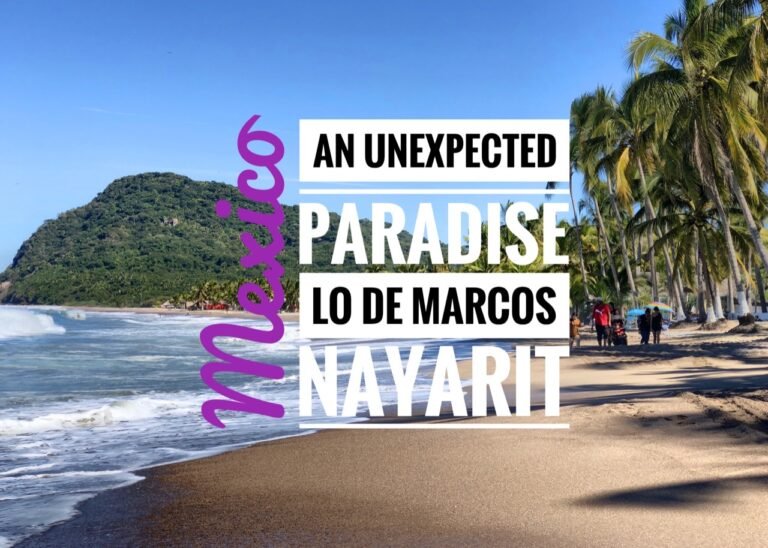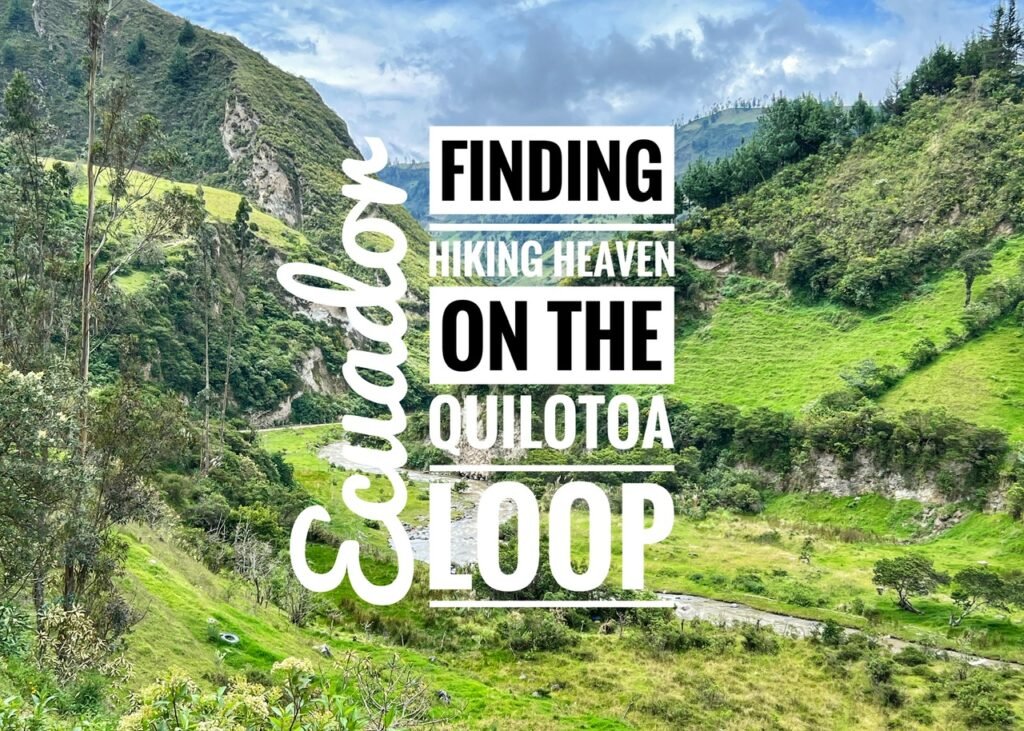
Day One: Sigchos to Isinlivi
For those who have been following awhile, you may remember our disastrous and slippery sludge down Peru’s Salkantay Trail last March. This is when Mandy began a six-month war with her right foot. As of May 2023, we’re quite happy to say that she completed her first multi-day trek since of 36 kilometers and although her anxiety and pain struggled a bit the day before we hit the trail, she conquered that pain and overcame the trail with no issues at all! Yay!
The Quilotoa Loop, which is not even a loop at all, is arguably the most popular hike in Ecuador. And for good reason. It can be done independently, takes you through some stunning Andean scenery and farmland, allows you to stay in remote villages where almost everyone dons the image of a traditional Ecuadorian and ends with the breathtaking cratered Quilotoa Lake.
The first day took us from the village of Sigchos to the isolated village of Isinlivi, and was a nice undulating warm-up of 10.4 kilometers.
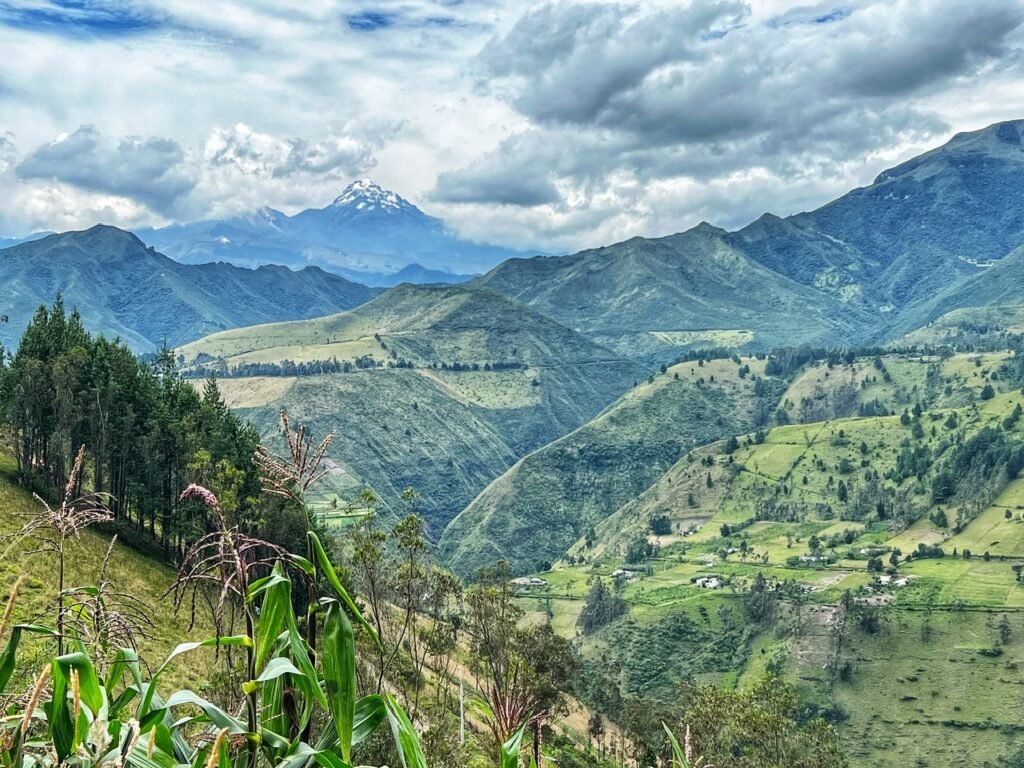
Another 17,000+ foot snow-capped peak called Iliniza Sur known for ice and snow climbing showed her face before we even started the trail.

Farmland was everywhere. We saw way more cows than people.
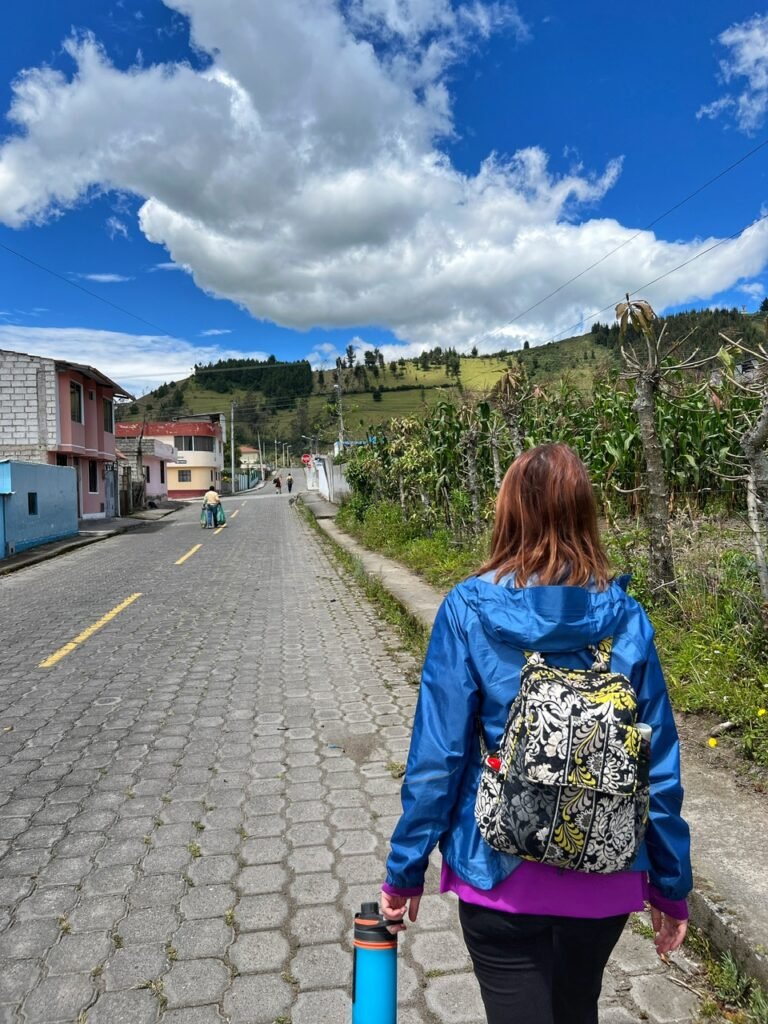
Mandy starting the trail in Sigchos. She comically hiked with basically, her purse (thanks Jamie) because that’s all we really needed with our other day pack. It was here we spied a man up the road who was struggling with quite a load of something and taking periodic breaks.
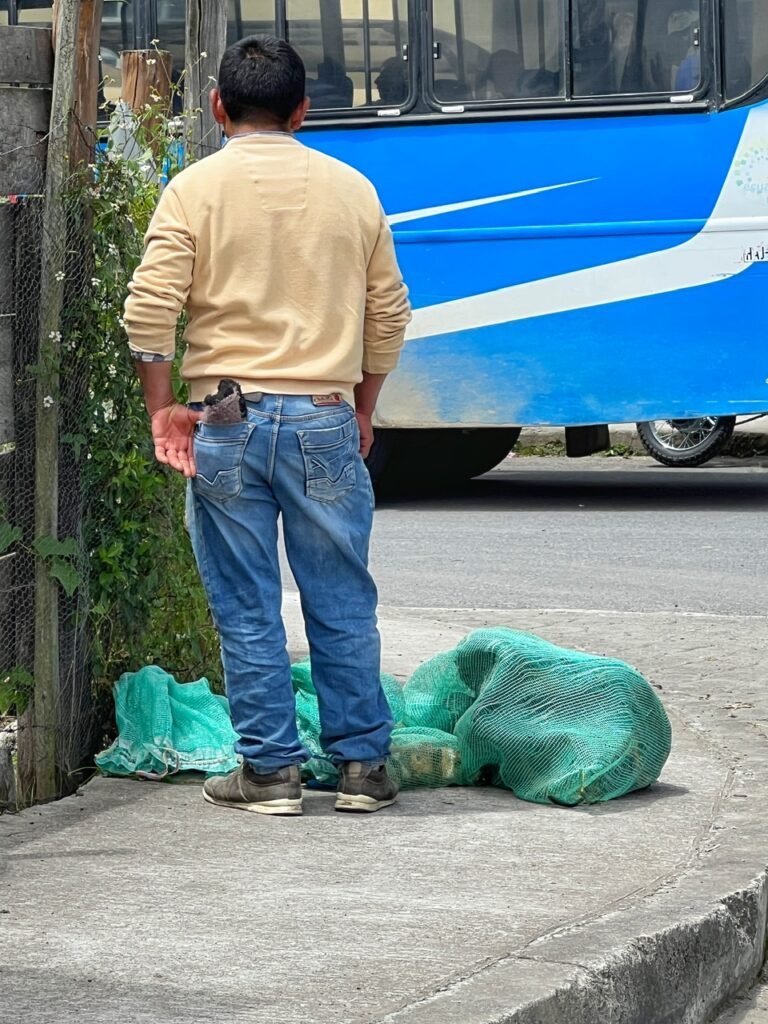
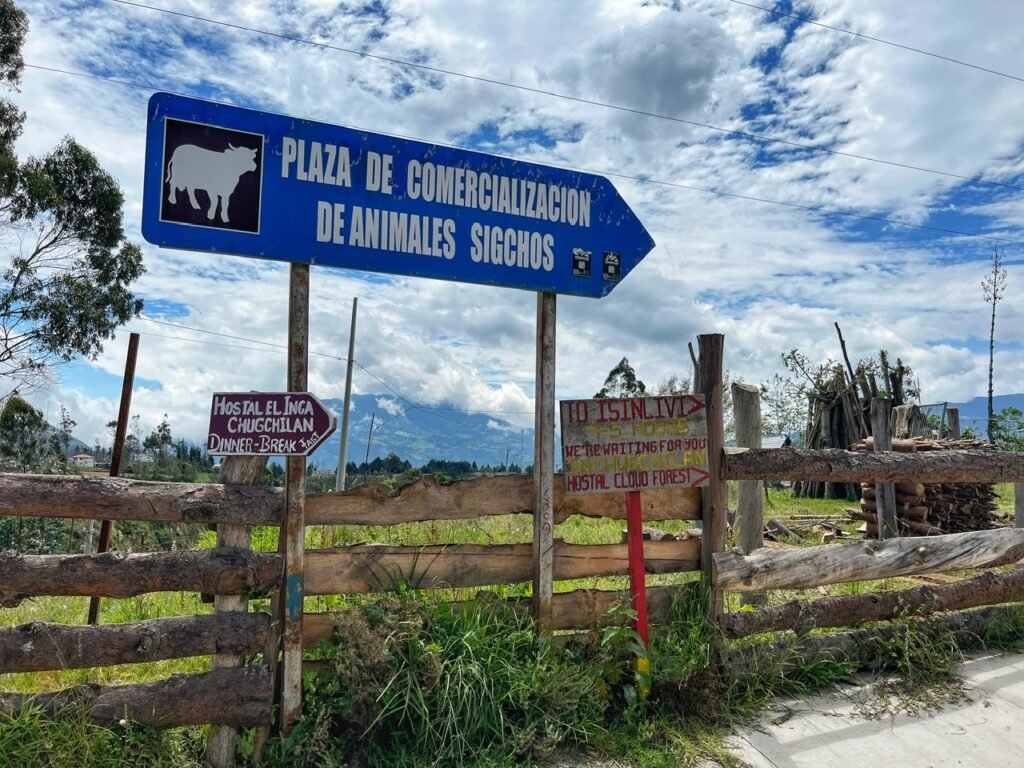
As we caught up to him, we thought about helping until we were horrified to realize what he was carrying in those bags. 😢 Mandy wanted to tackle him and set all the little guinea pigs and chickens free, but Greg didn’t think that would help us make friends in the communities. And then we also saw where he was taking them. Of course this is all part of farm life and how villagers survive, but it’s always hard to stomach.
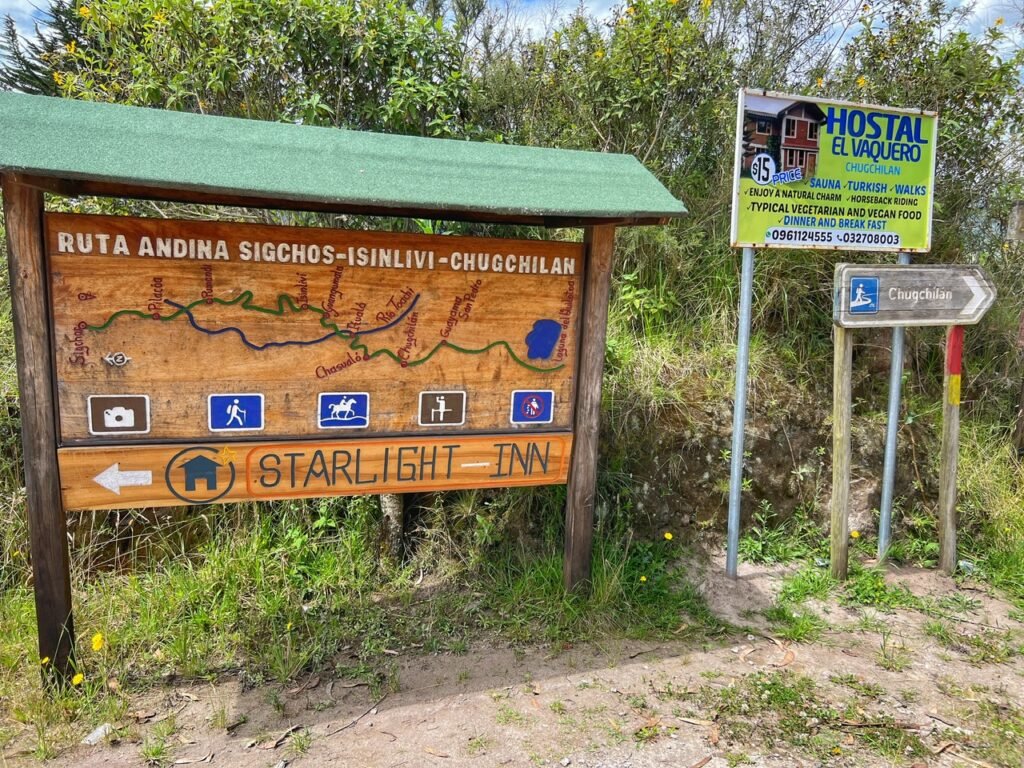
Anyhow, let’s get this trail started. The trail would consist of three days of hiking. The first 3.5-hour day being the easiest, and getting progressively tougher over the next two. You can also do the trail in reverse, but then you don’t get the climatic lake at the end.
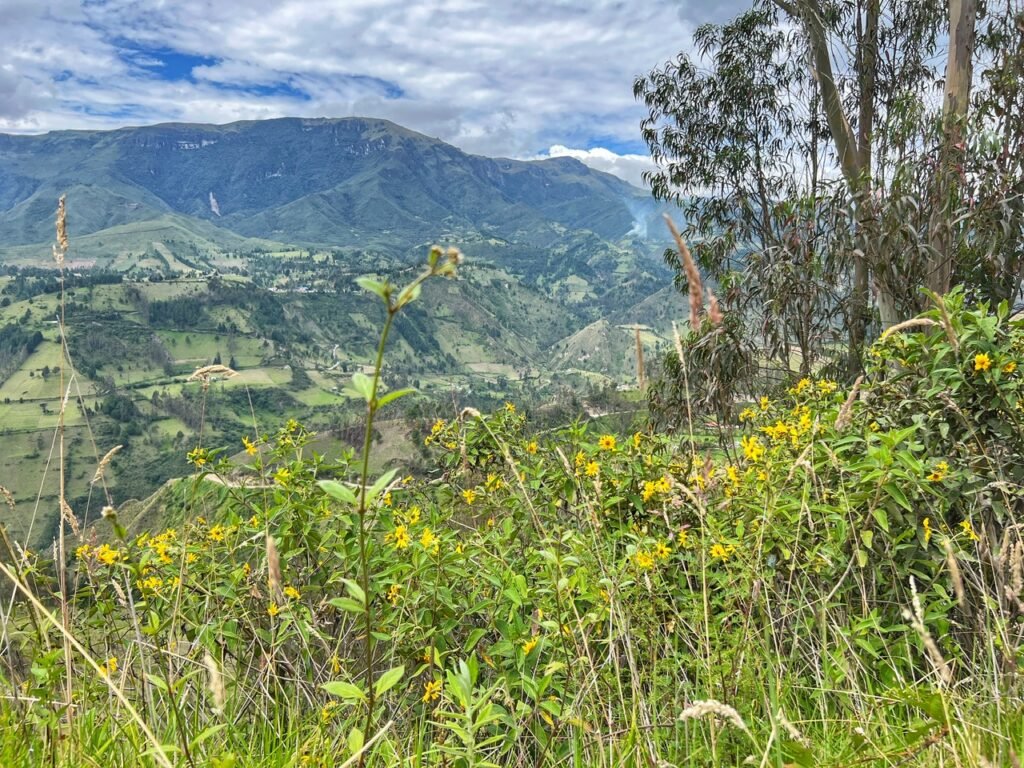
As we started the hike, we found the terrain to look very similar to the Ethiopian highlands. Absolutely green and absolutely gorgeous. It felt sooo good to be hiking again.

A little chapel along the way.
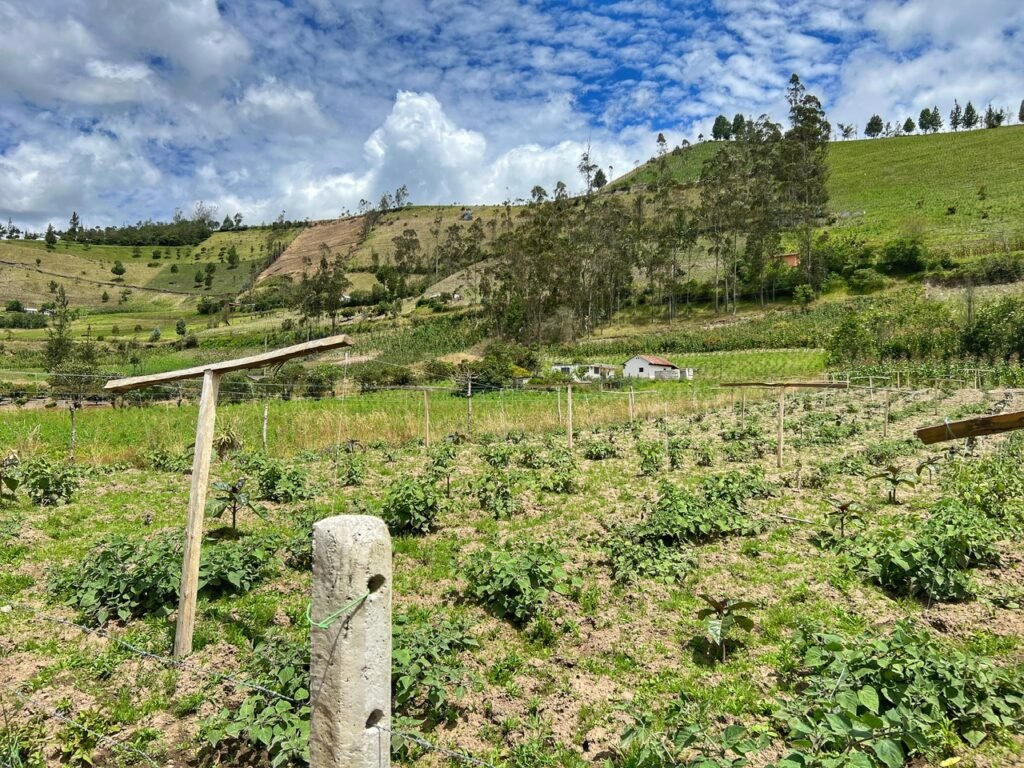
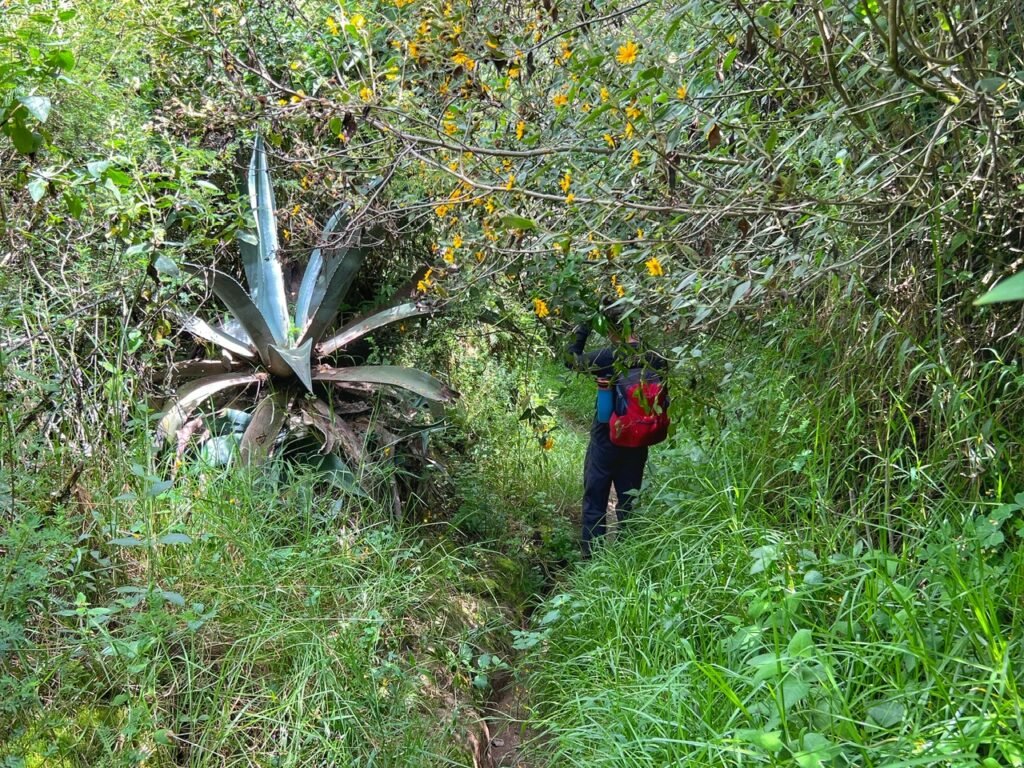
Among the crops we saw were rows and rows of tree tomatoes. These are a tomato-like fruit that grows on trees and they’re delicious. Unfortunately we didn’t get a lot of forest on this trail, but the parts we saw were teeming with new plants for us.
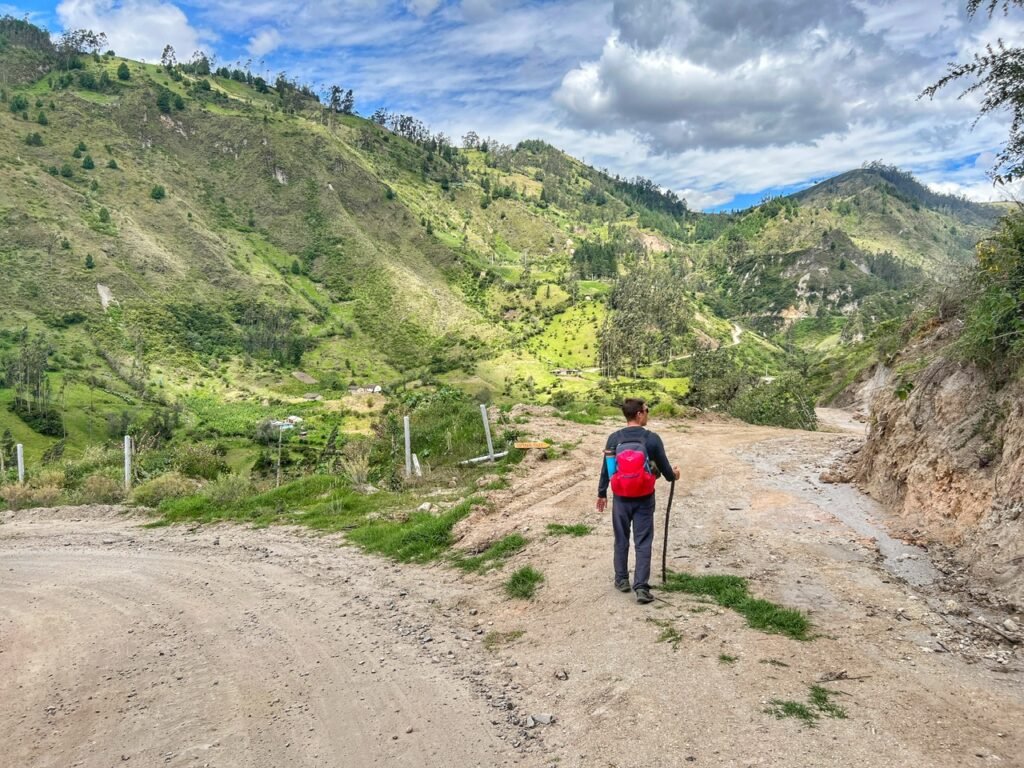
Most of the trail was much more open.
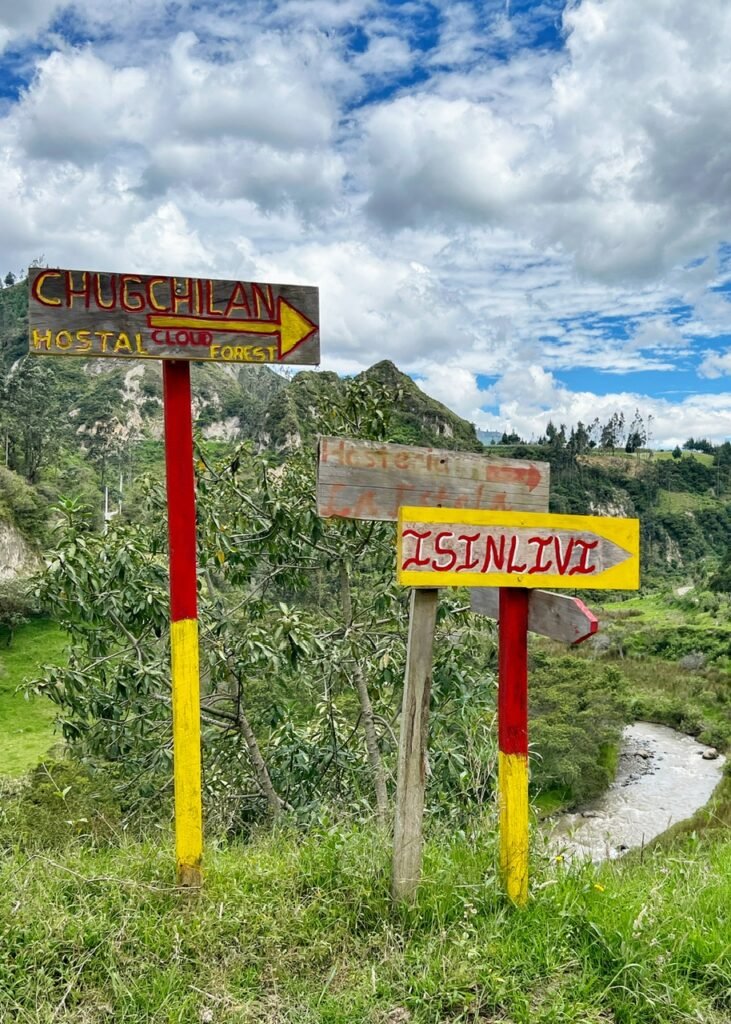
The trail was very well marked although we definitely relied on Mapy to get us through parts of it.
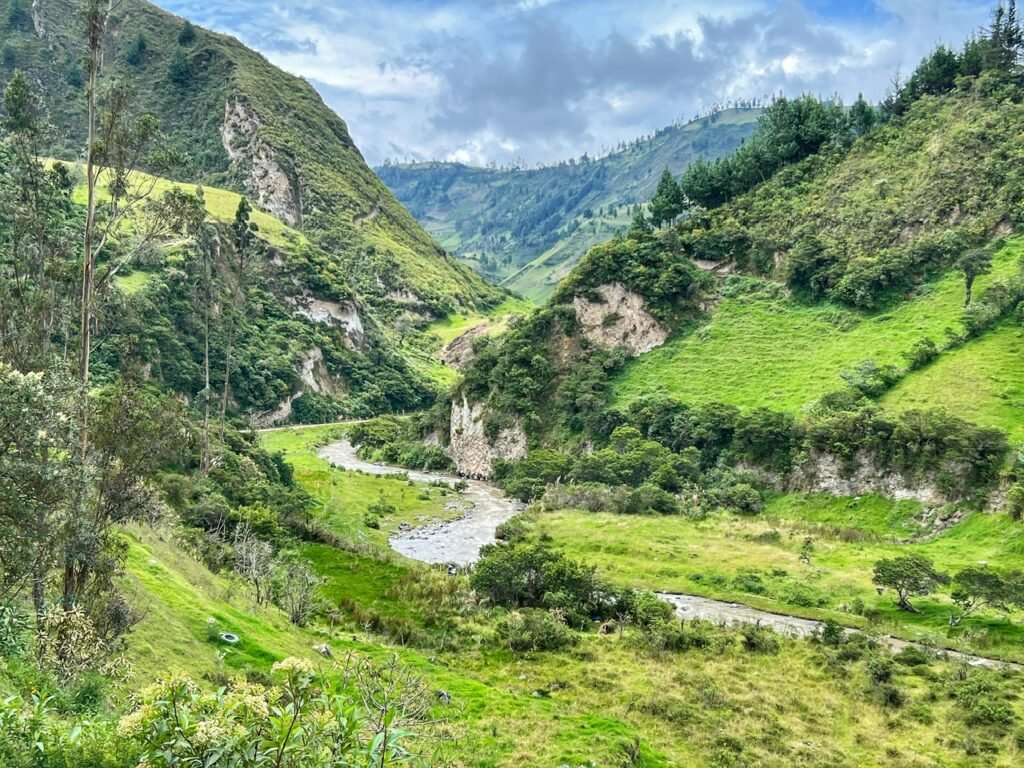
Getting close to the river which we crossed at least four times over the course of our hike. (Because why would you go down only once? 😂)
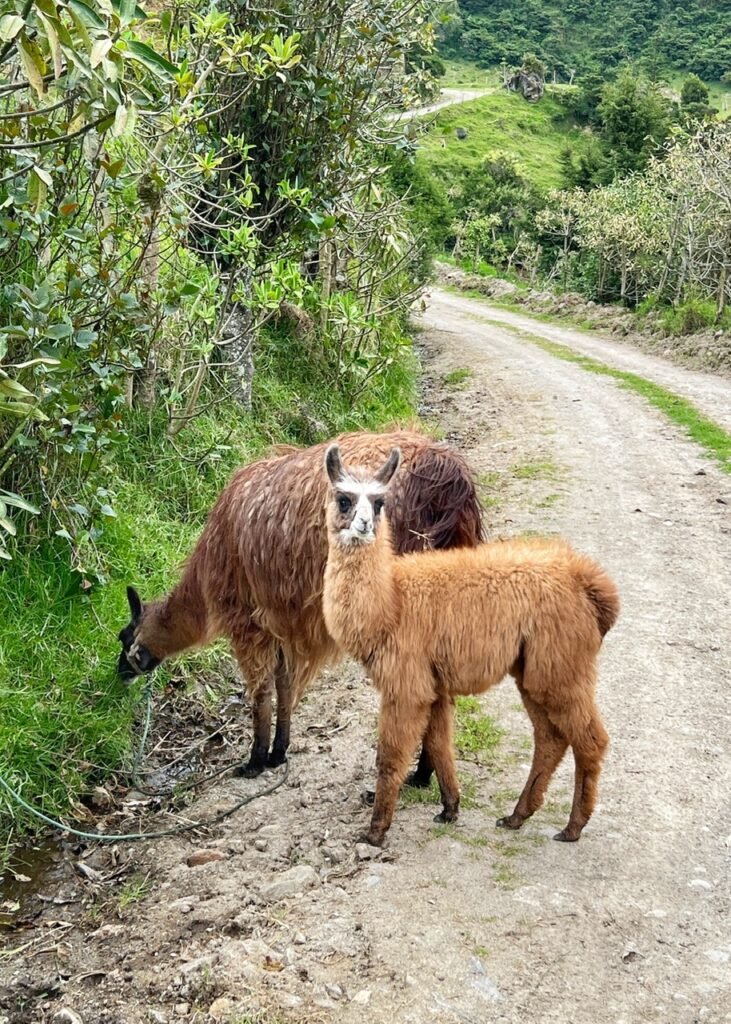

An adorable alpacacito and his mama as we finally crossed the river!
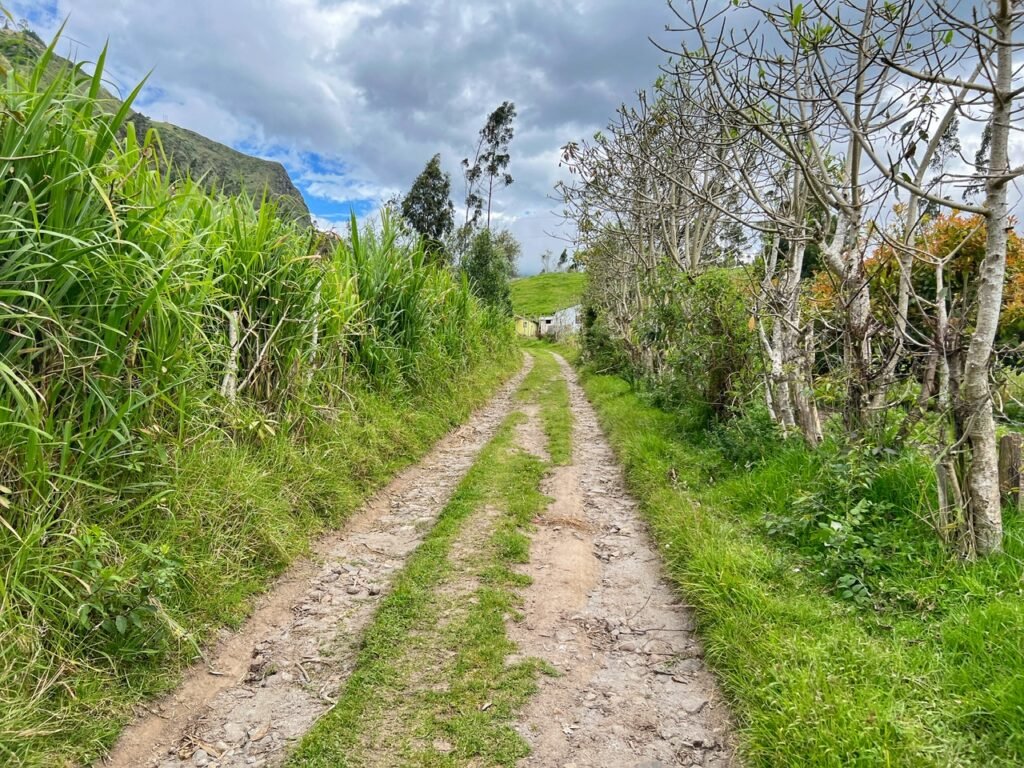
It was shortly after this that we had to fend off our first snarling dogs. Fortunately, we’ve learned a lot about this since we got nearly mauled in Romania in 2018!! Face them, walk backwards and hold your (mandatory) stick out towards them. Next steps are yelling, picking up a rock, pretending to throw the rock and last resort, actually throwing the rock. Fortunately, we only got to the yelling stage on this day. Meanwhile, we realize afterwards that their negligent owners were working in the field nearby. Seriously?
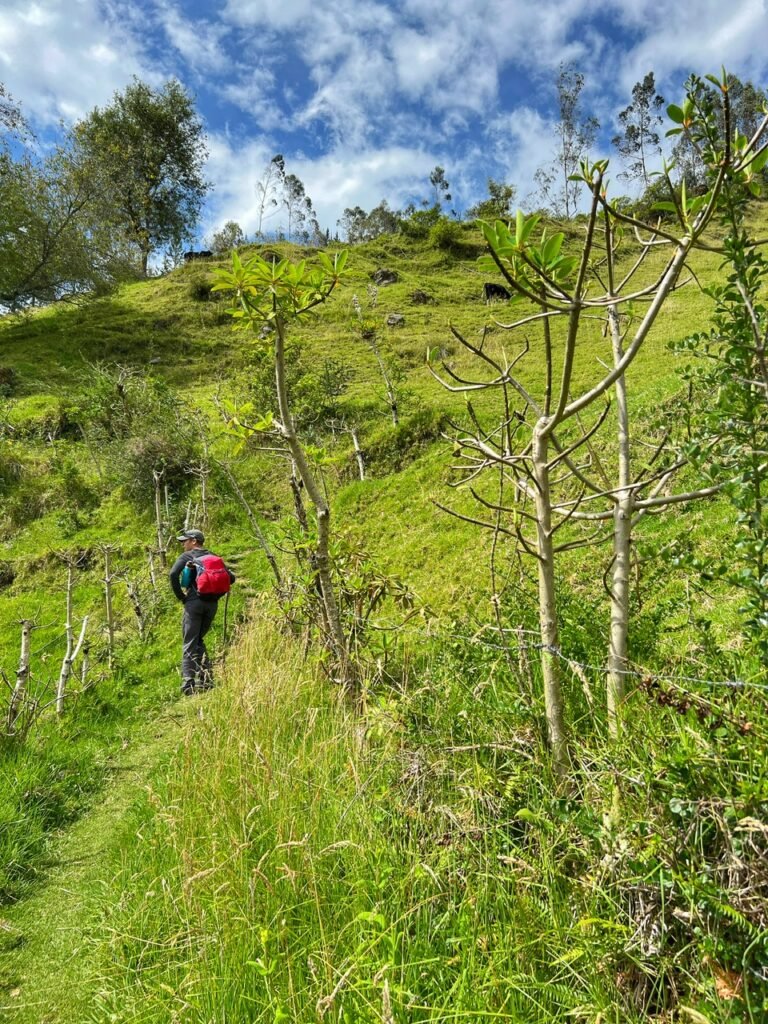
Continuing on. Time for the uphill to begin.
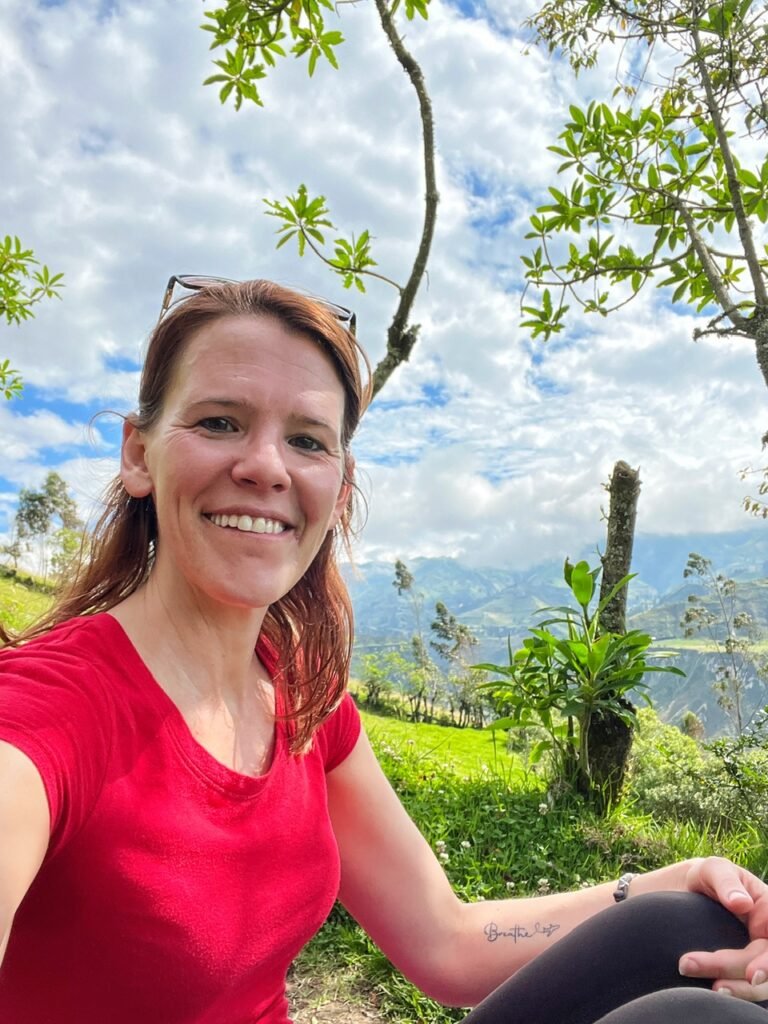
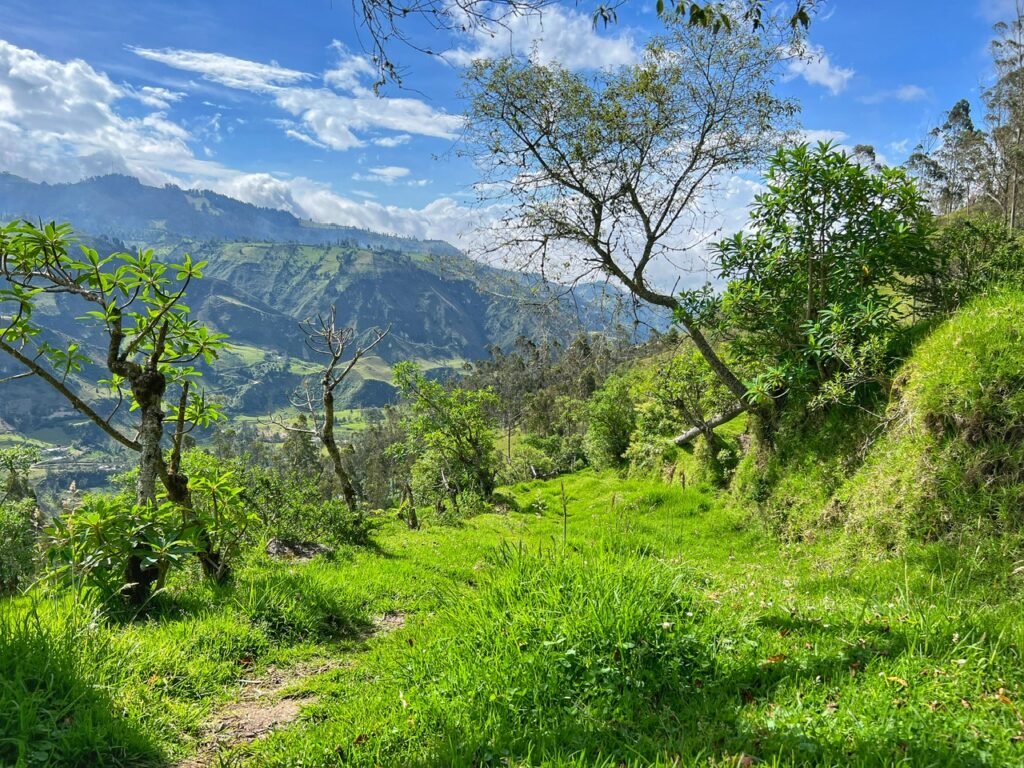
Snagging a water break. We brought our Grayl water filter along so we could fill up at rivers and streams. It was SOOOO beautiful!
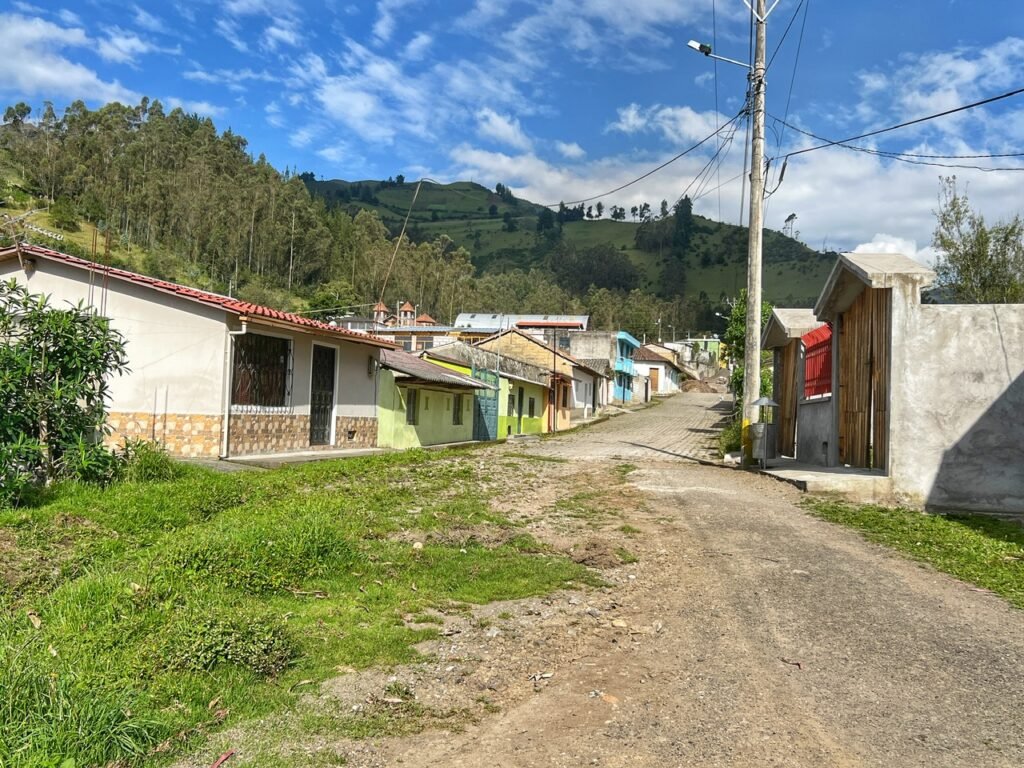
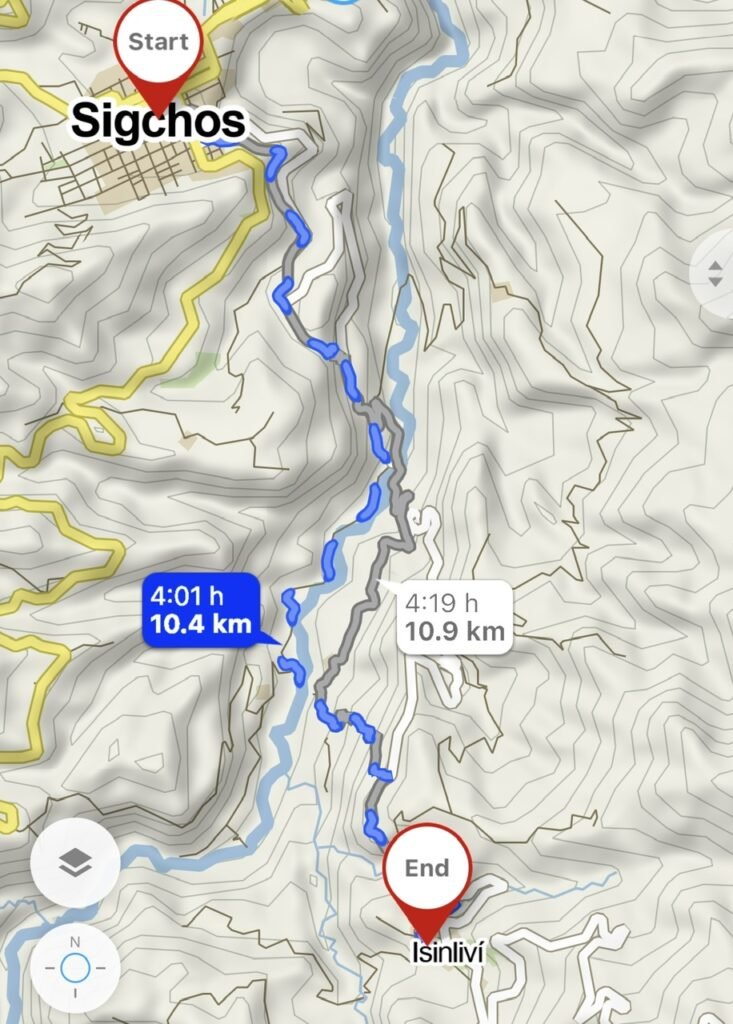
And, at last, arriving to our day one destination… the tiny village of Isinlivi.

For our first night trekking the Quilotoa Loop, we stayed at a lodge that is recommended far and wide in Ecuador and it was worth every penny…Llu Llu Llama. This eco-friendly retreat is absolutely unbelievable for its remote village location tucked into the pristine Andes. Two and a half hours from Quito, it can only be reached by hiking, as we did, or by local bus.
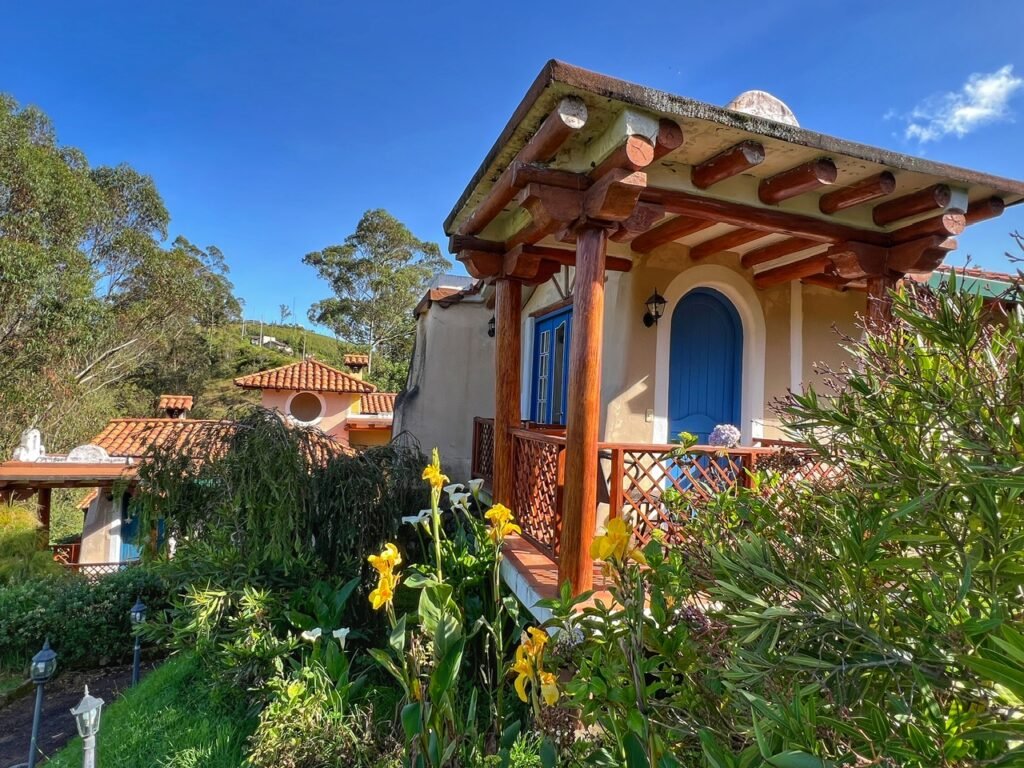
Visitors have the option to stay in a mountain room, farmhouse room, garden cottage or dormitory, which is $20/person.
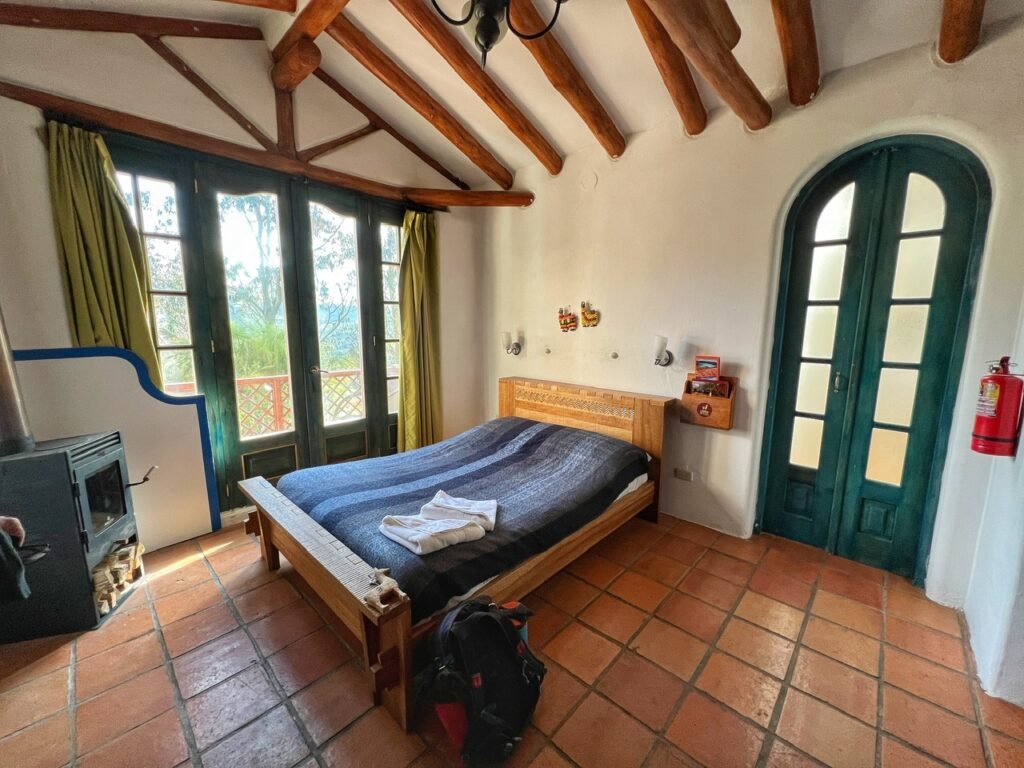
Our $50 a night was all-inclusive with a phenomenal three-course dinner and breakfast, (meeting our dietary requirements) as well as yoga facilities. It also included a jacuzzi and steam room for an extra $5. Truth be told, we paid for a farmhouse room and sweetly got upgraded to the $84/night cottage, which featured a fireplace and private balcony.

Our lovely walk-in shower.
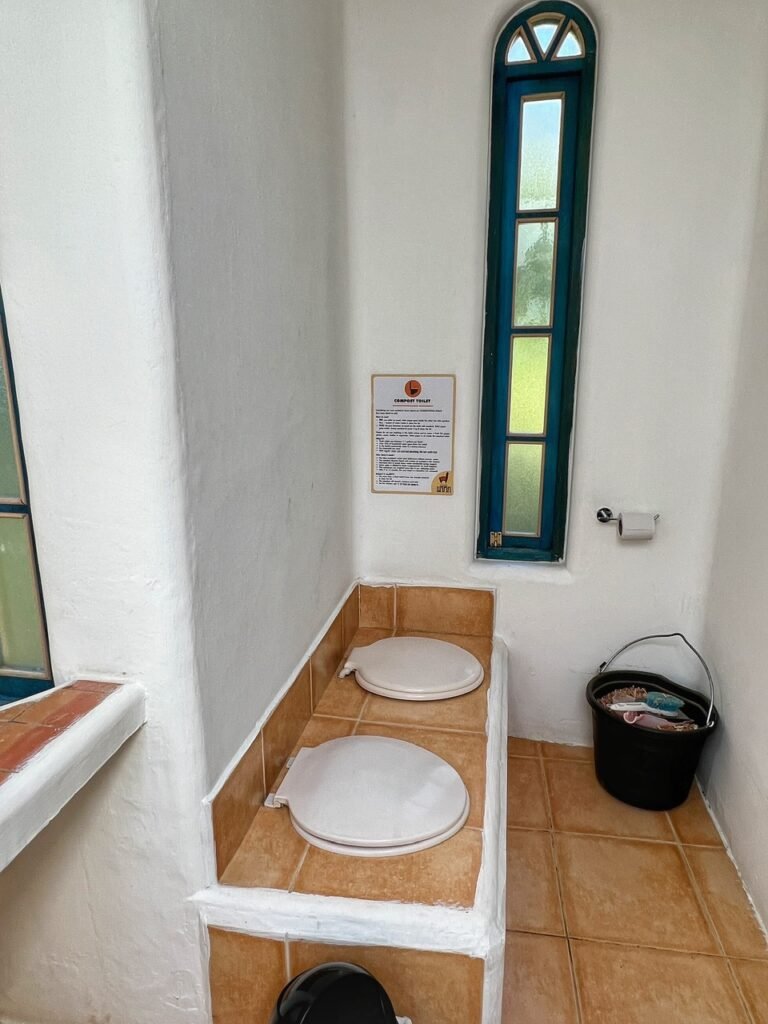
And to take our marriage to the next level, we thought it even offered his and hers toilets. But apparently, because they were environmentally friendly compost toilets, one was actually meant for #1s and one for #2s. Not sure what you’re supposed to do when you have to do both. 🤔
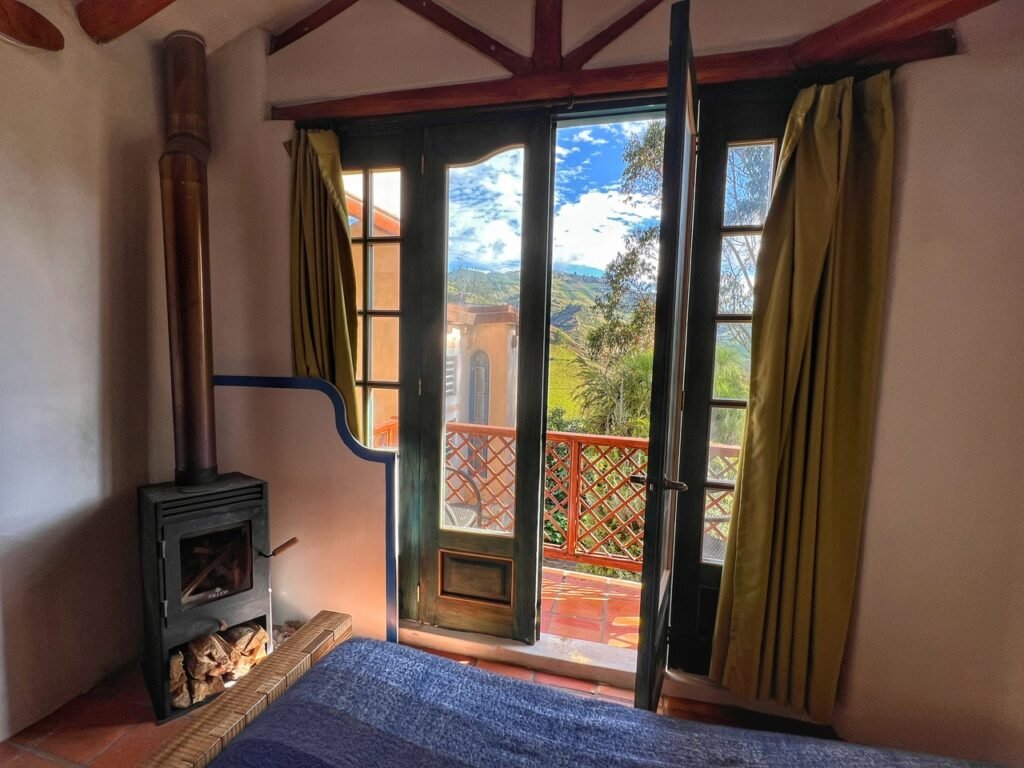
And the view of the mountains from the balcony.
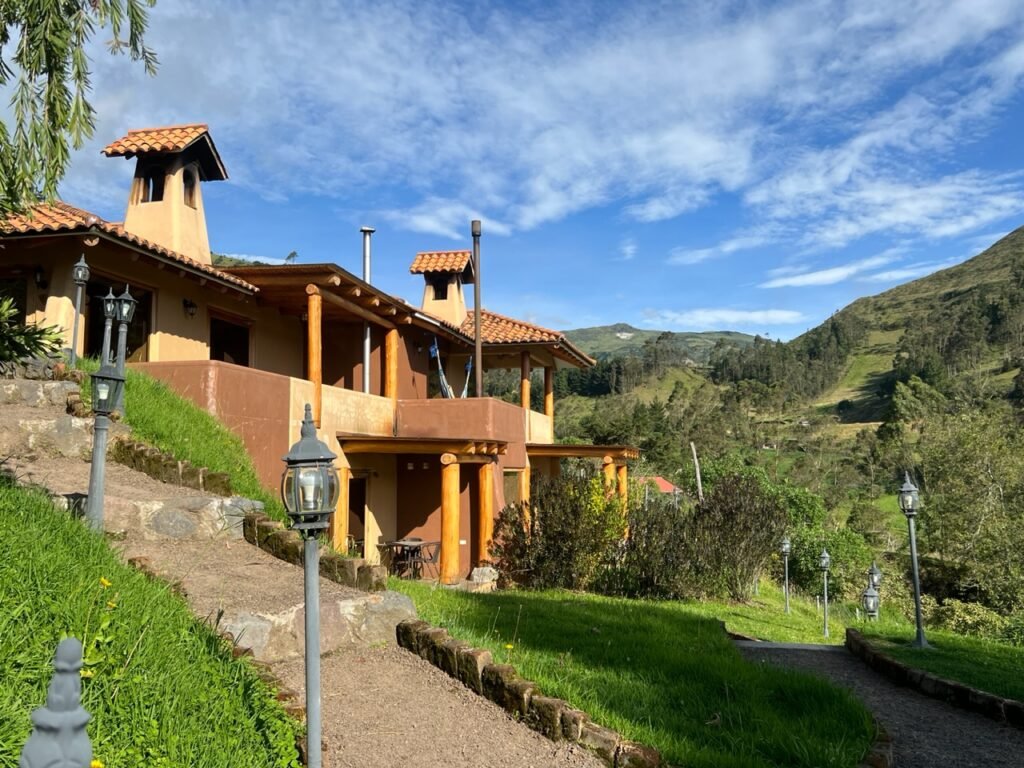
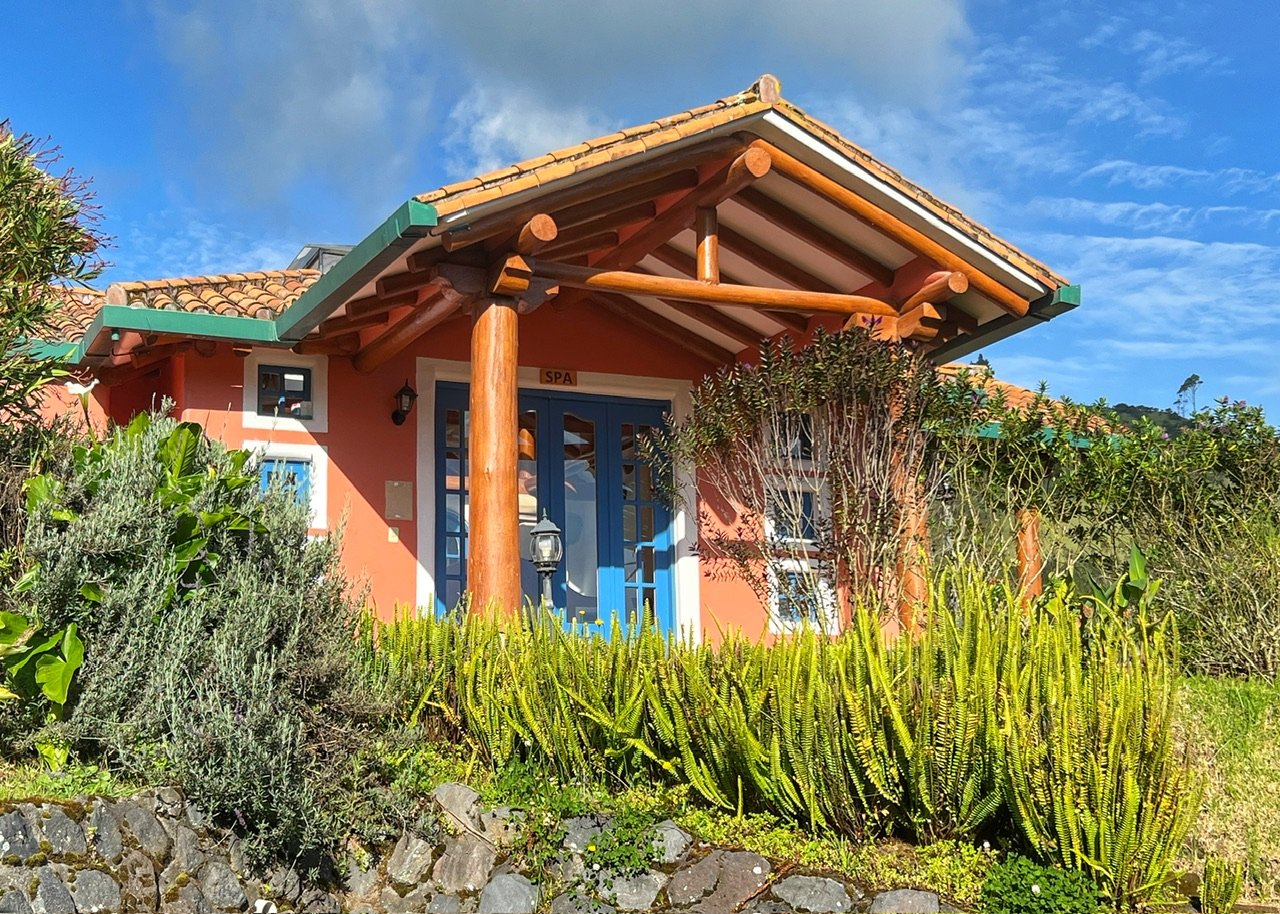
Some of the other cottages on-site, including the spa. Unfortunately, we didn’t have time to take advantage. We can see the appeal of staying here multiple days for many reasons. This, as well as local market, nature and farm tour options. This facility is wonderfully run and incredibly community oriented
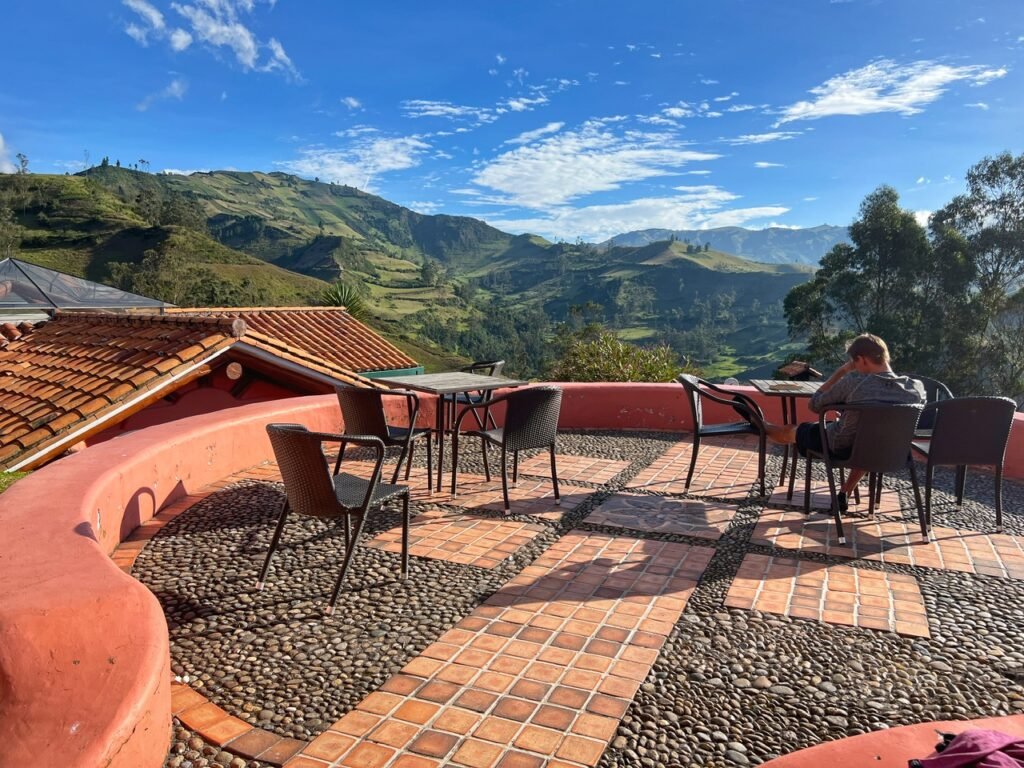
The stunning Andes. We were so fortunate to be basked with sunshine (the first day.)

The yoga shala. Mandy definitely got up early to take advantage of this!
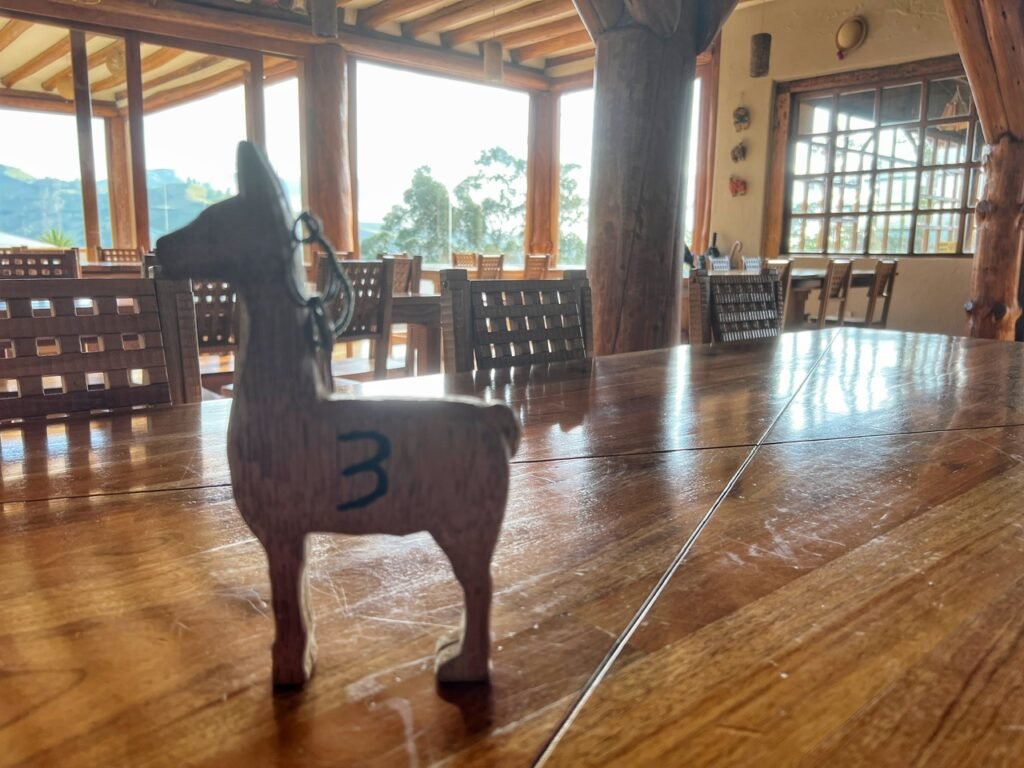
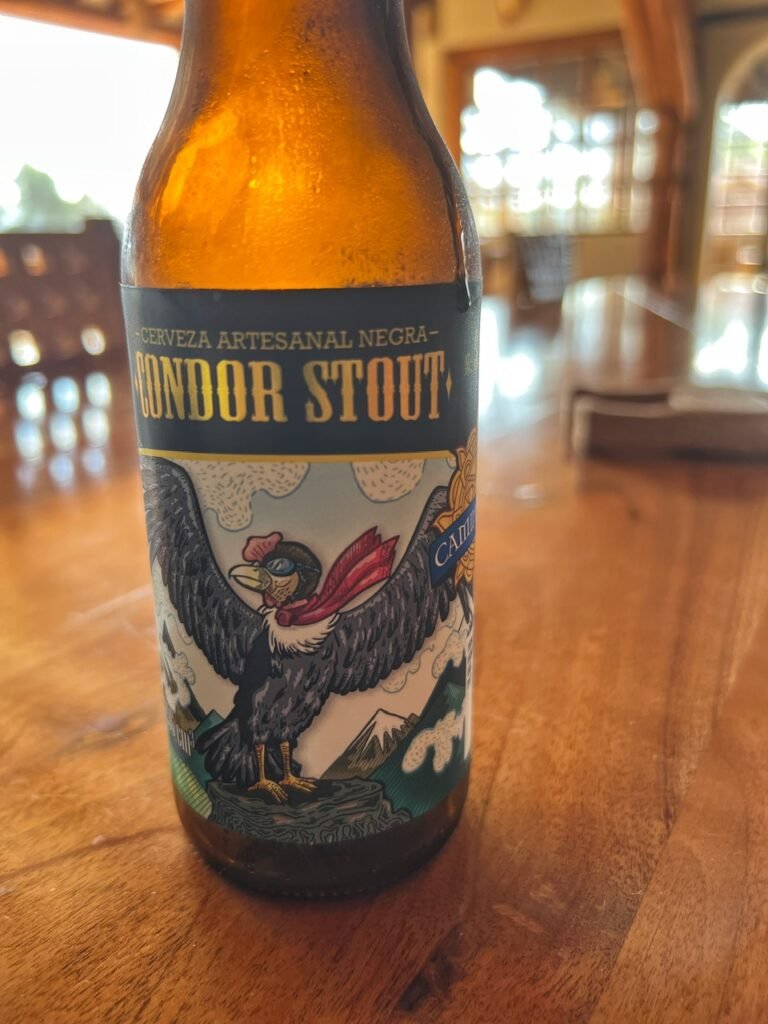
Everywhere we’ve gone in Ecuador, they’ve given us giant room keys. But this little llama was the biggest. 🤣And they even sold craft beer for $3/bottle.

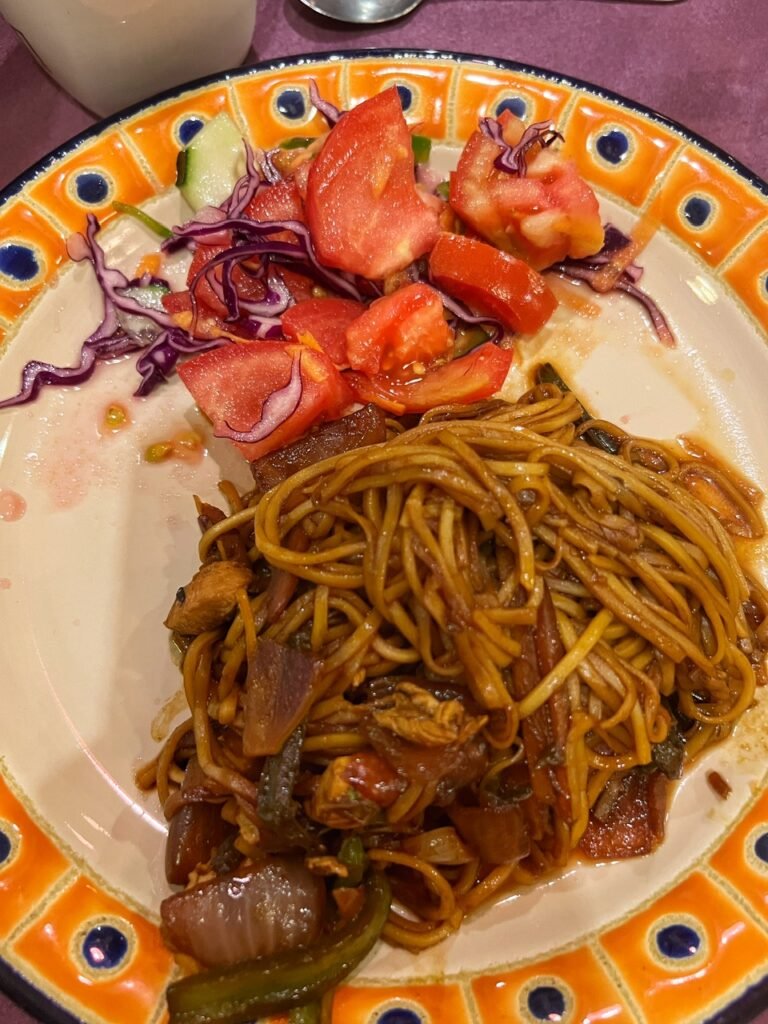
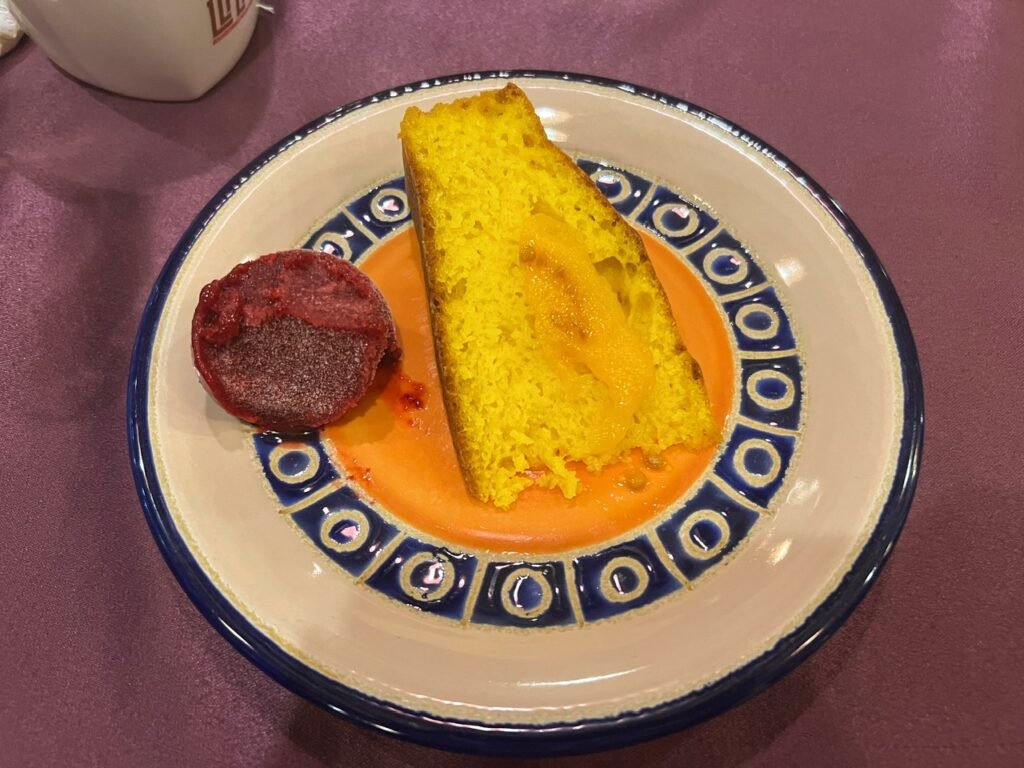
Greg’s specialty meal sin gluten. And, Mandy’s veggie pasta and tomato salad. Yes, they catered to our needs (wants) and the food was SO amazing. Also, Mandy’s con gluten dessert…lemon cake and blackberry sorbet. The food was some of the best we’ve had in Ecuador.
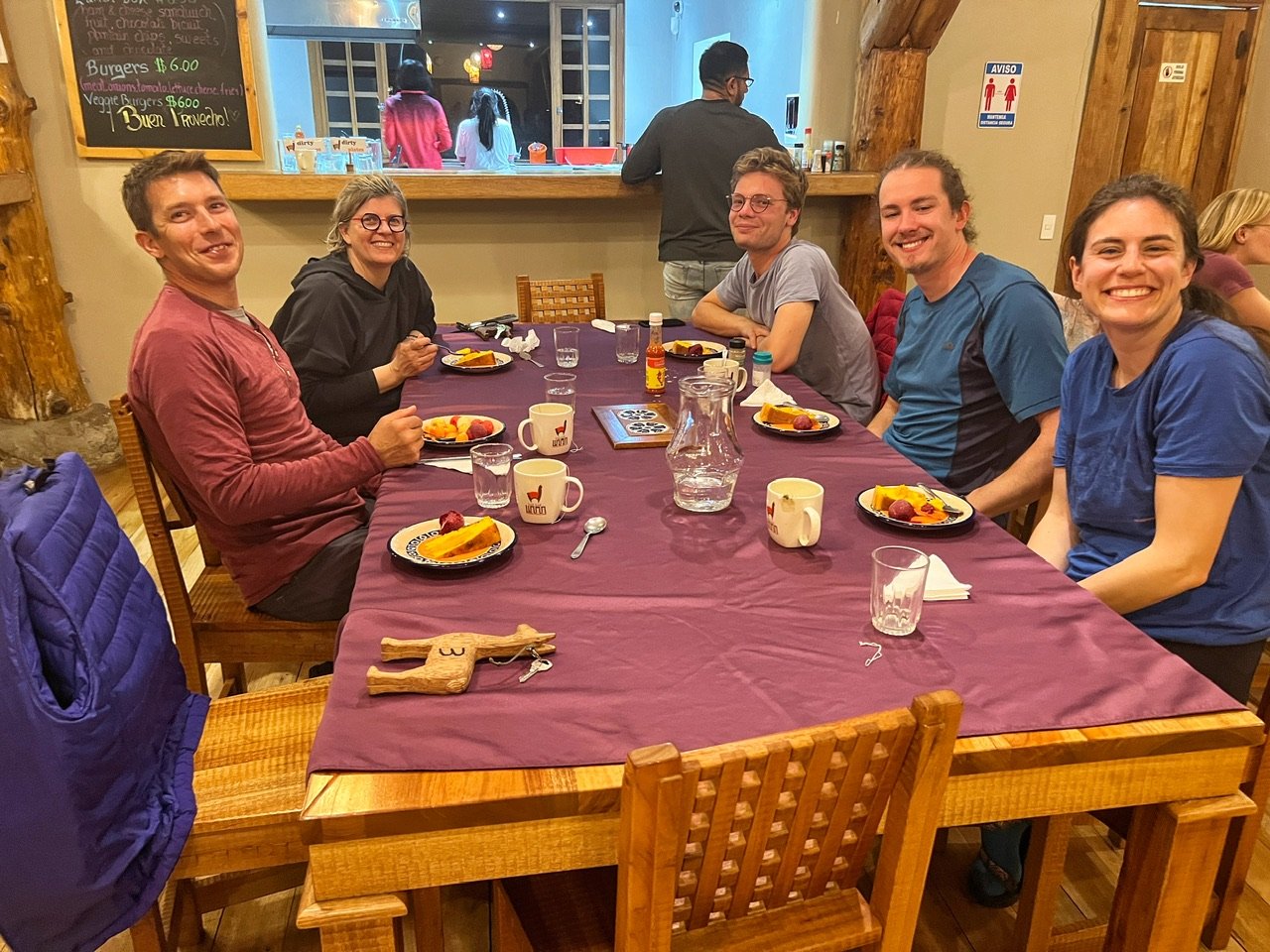
Our new trail friends from Canada, UK and France.

It also had super fast wifi and a room for chilling out in. We couldn’t recommend Llu Llu Llama more and only wish we had stayed two nights!
Day 2: Isinlivi to Chugchilan
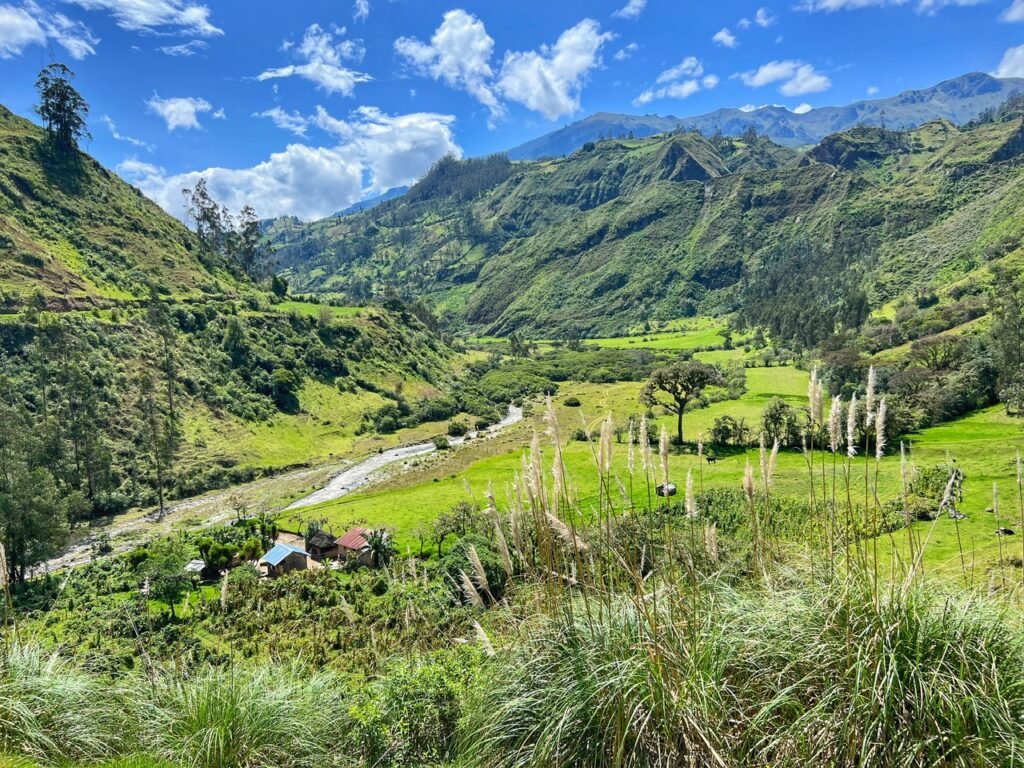
After a cozy night of sleep and delicious breakfast at Llu Llu Llama, we set out for day two of the Quilotoa Loop, which would be about six hours towards Chugchilan. This day was about 12 kilometers and brought more beauty, more challenging terrain and a sprinkling of rain, but nothing too terrible.
It ended in the village of Chugchilan at Hostal Doña Clarita, a newer hostal run by a very friendly family who cooked us all vegetarian food and provided us a hot shower for $28/all-inclusive.
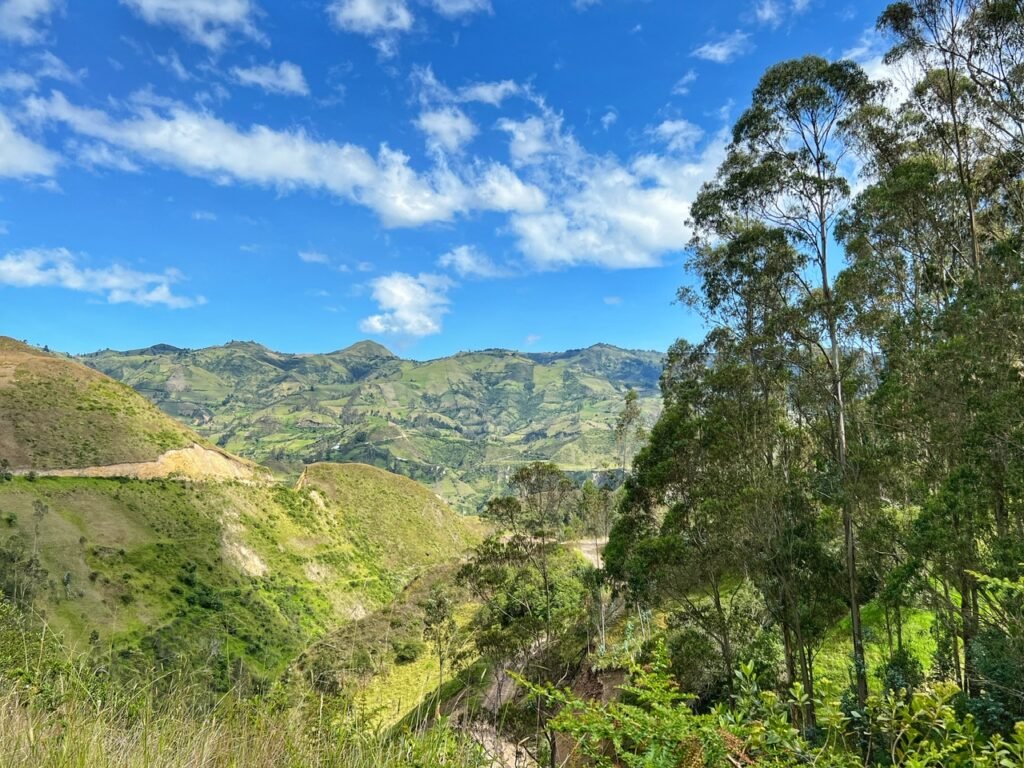
There is something so liberating about setting out on a trail early in the morning and knowing your only goal that day is to be one amongst beautiful nature. Just one reason we love longer distance trails so much.
Starting out, we were greeted with glorious skies and temperatures in the mid-60’s (upper teens Celsius).
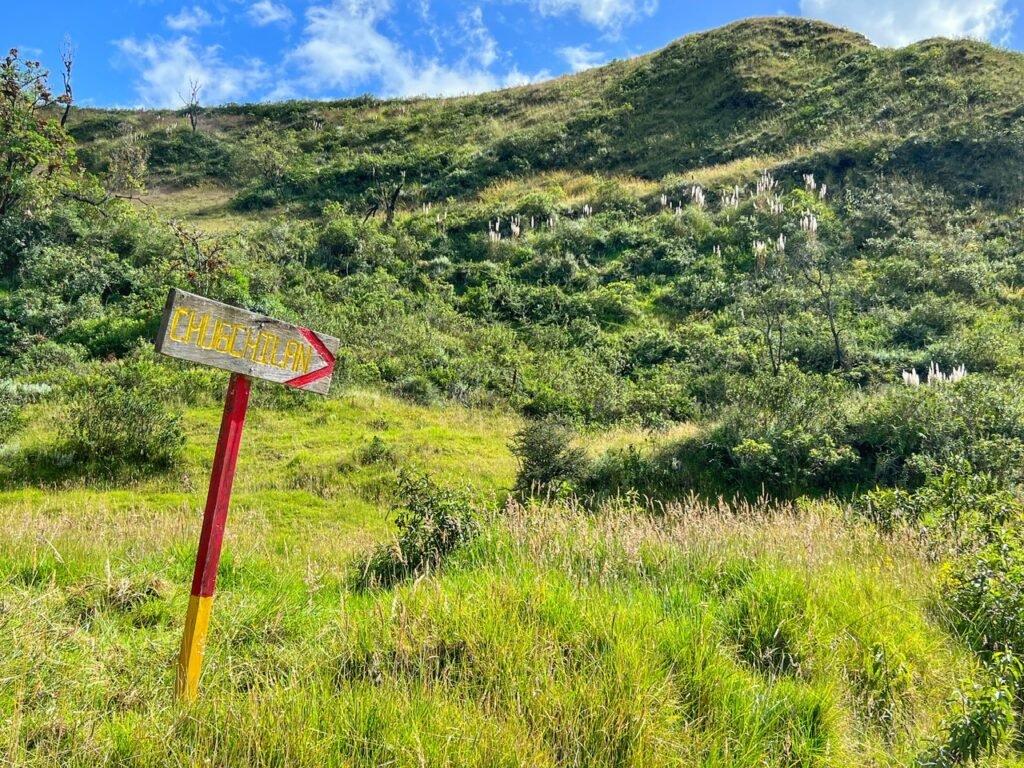
Following the trail got a little tricky on day two although there were still plenty of signs. Still very important to have a good trail app. On this day we had to drop down to the river again (782 meters/2565 feet down) and back up even higher (983 meters/3225 feet) than the day before.
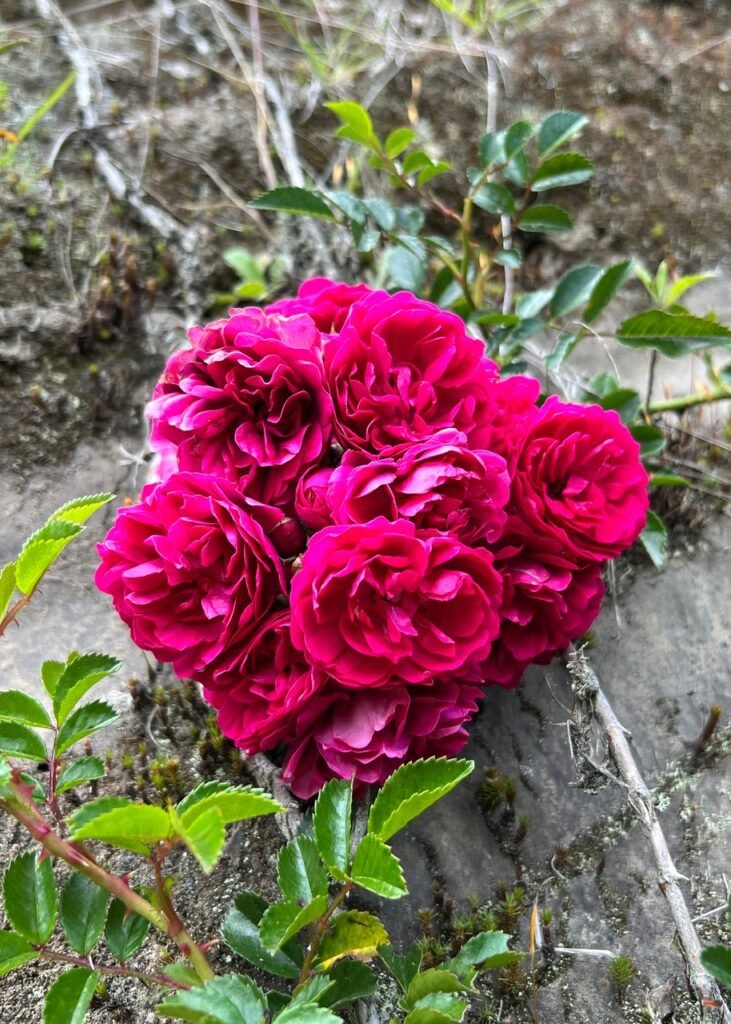
Delightfully fragrant wild roses on the trail.
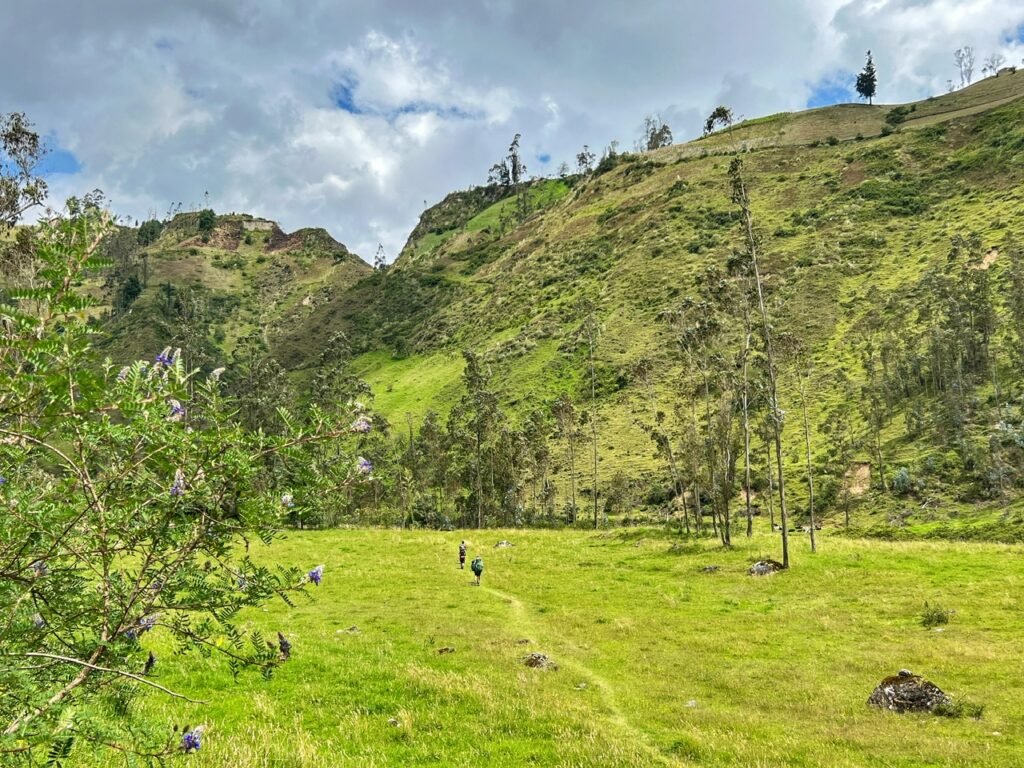
Some of our hiking buddies ahead of us walking through a beautiful meadow.
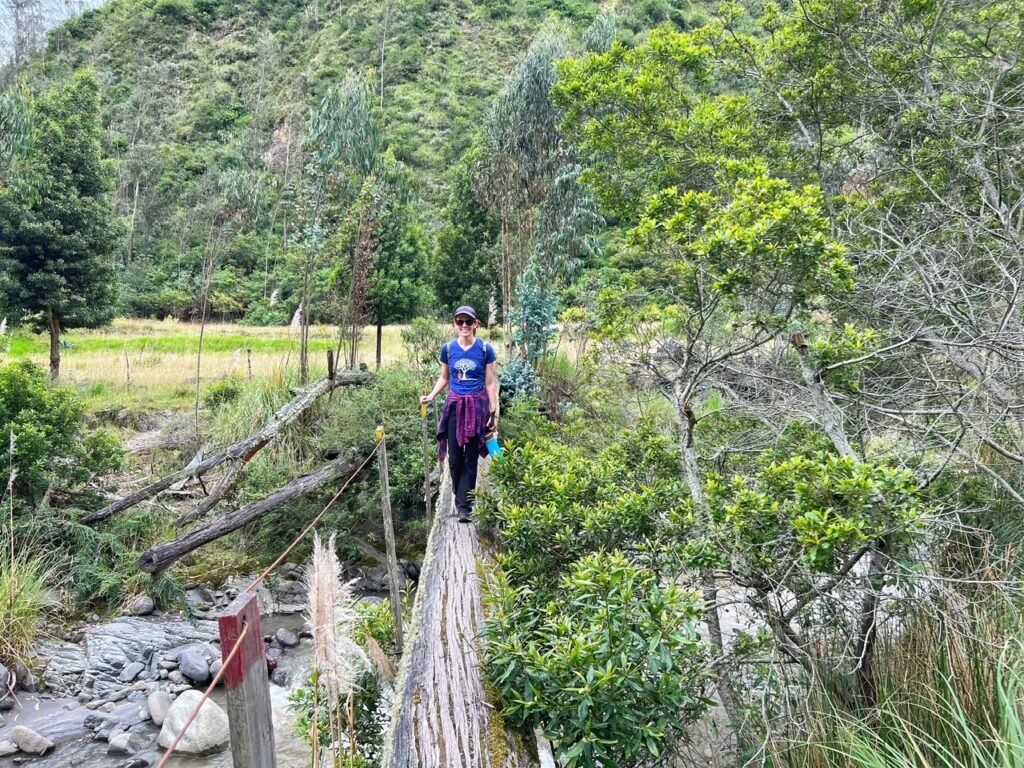
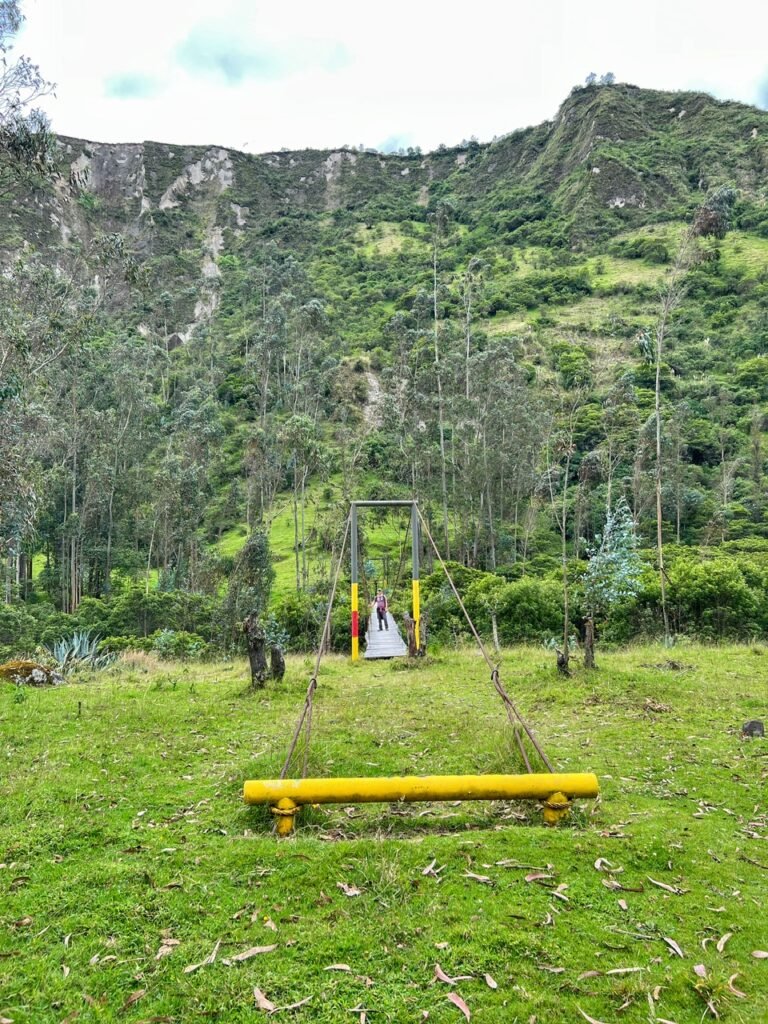
Traversing perilous (not really) bridges. And bridges with delicate wooden slats complete with man-eating alligators underneath. (Joking).
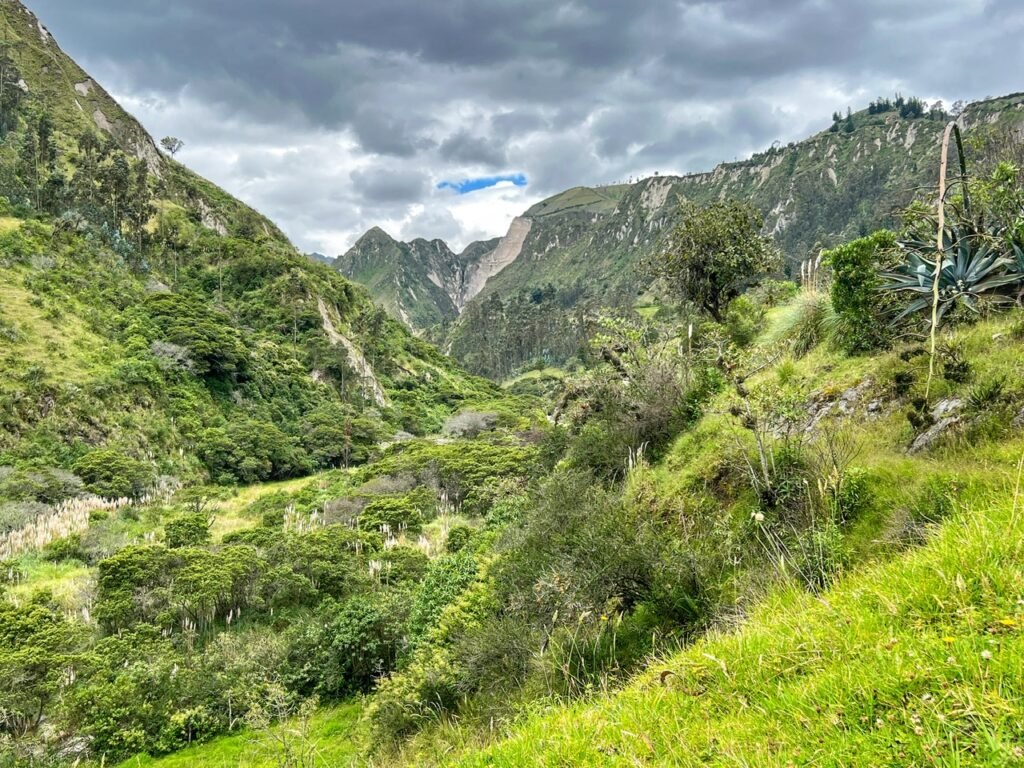
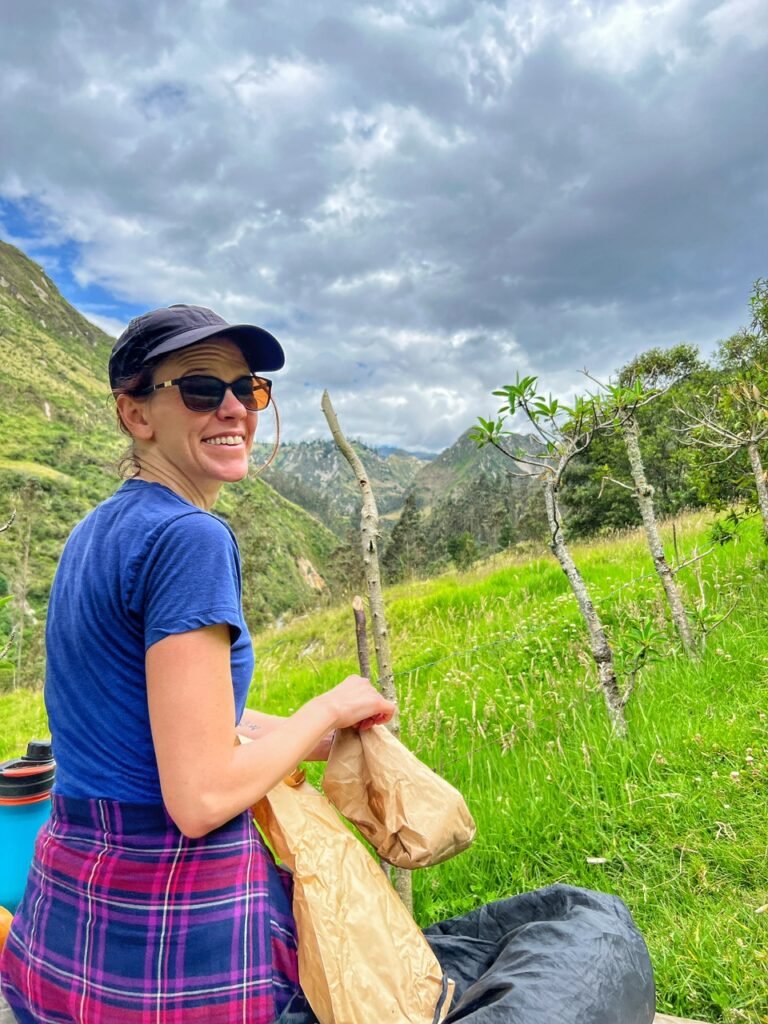
Around lunch, the skies began to turn, but we found a shelter under which to have our lunches, packed with love by Llulu Llama. The lunches were a bit steep at $6.50/each but also quite delicious with a tuna sandwich, fruit, plantain chips and cookie. Greg’s gluten free version was a salad, llapingachos (potatoes and cheese), and a boiled egg. It was just what we needed before some serious elevation gain.
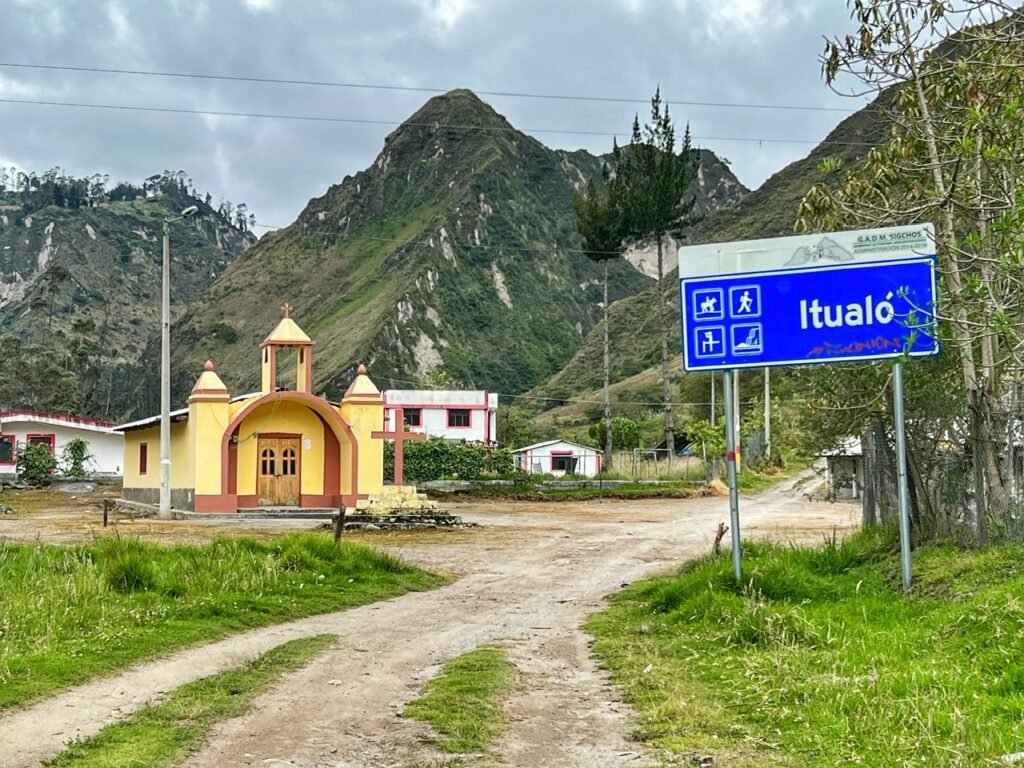
We thought the giant state-sponsored welcome sign was hilarious in the minuscule village of Itualo, which featured a church…
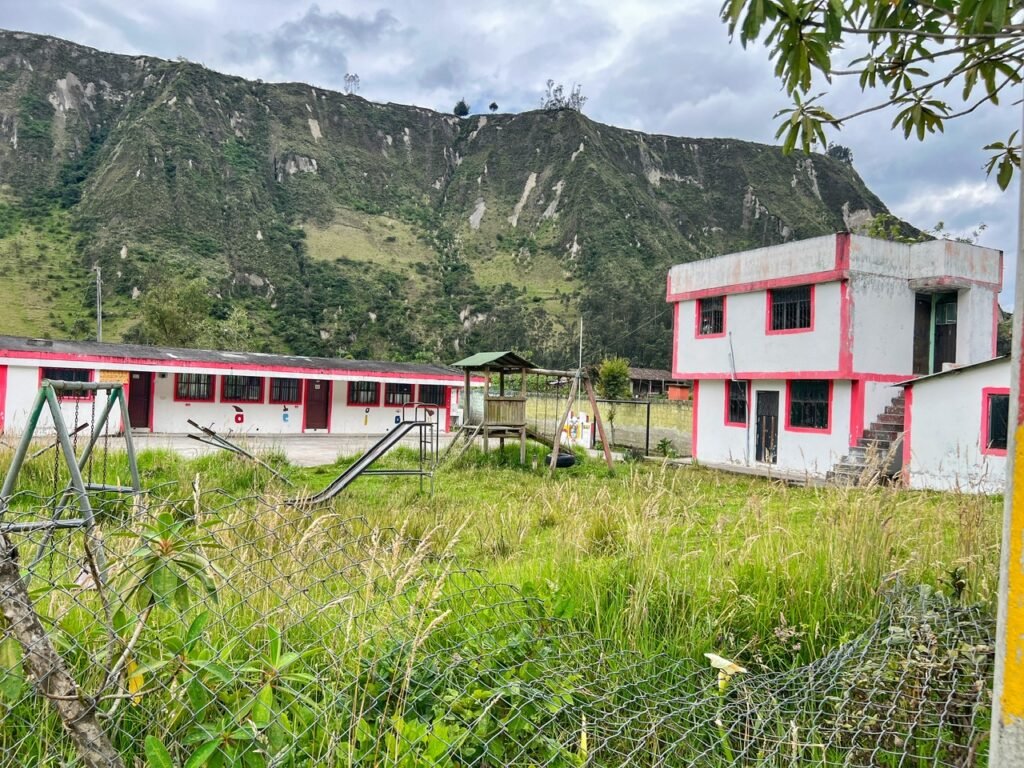
…and a school. We actually also saw some school kids on the trail coming home from school. Donned in their little uniforms, they have to walk a pretty arduous walk at least four miles round-trip daily to get to classes.
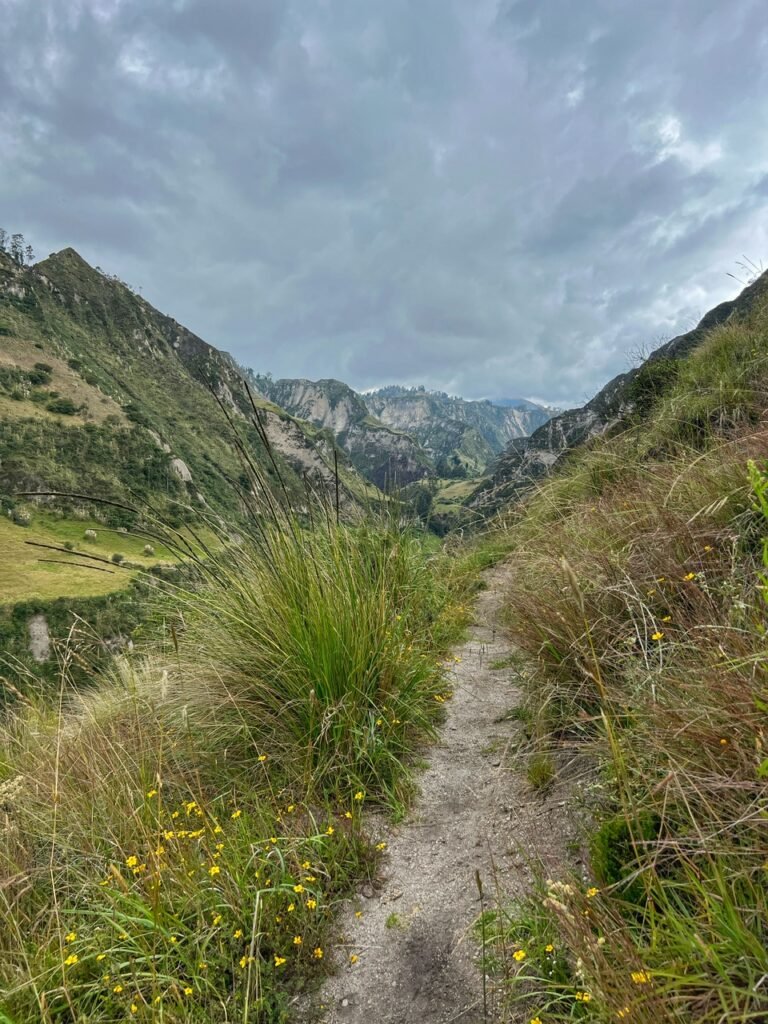
Atop a very high cliff looking down into a gorge. It was also raining quite a bit during this part.
Greg happy to have reached the saddle.
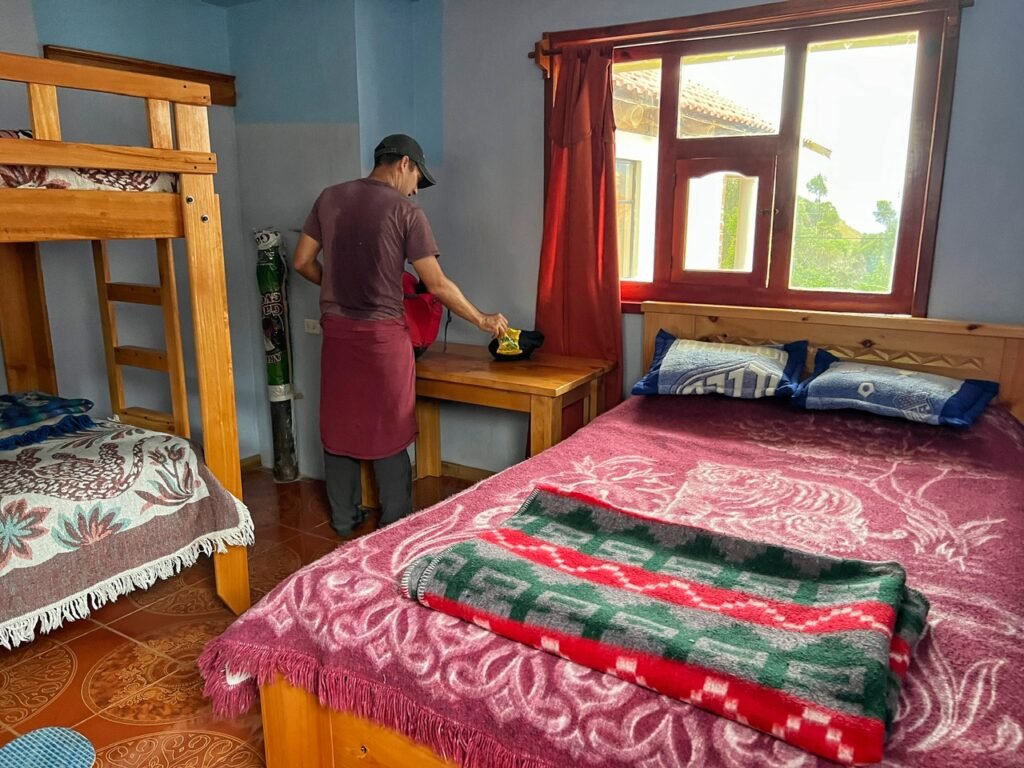
We arrived to our cozy hostal with a wonderful family just when the sky really let loose. It was a private room + all food and drinks in Chugchilan for $28/total. Wine was extra but only $3/glass. We chose not chug water instead of partaking because of the altitude at 3190m / 10466 feet. Fortunately we didn’t have any altitude issues on this hike. It’s quite a bit lower than the ones we did in Peru.
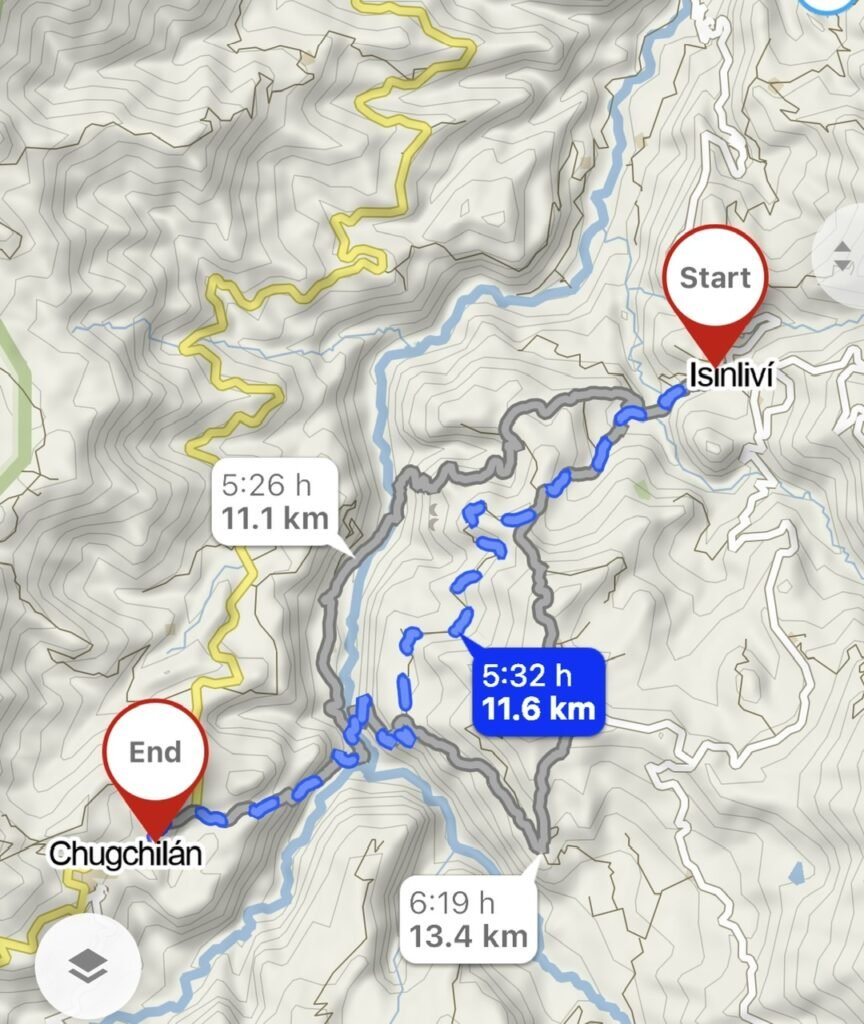
Day two route.
Day 3: Chugchilan to Quilotoa
As expected, the final day was the most arduous of the three day Quilotoa Loop, which took about seven hours and was an elevation gain of more than 1239 meters (4064 feet). It delightfully culminated with the grand finale of Quilotoa Lake, which we fortunately got to behold just before the clouds and rain gusted in, draping us in sogginess and challenge for the final hour. This is also when a crafty and dishonest local tried to scam us by leading us off the trail and onto another section. Needless to say, it didn’t end with the bang we were hoping for. But the important thing is, we did it!! 😜

Quilotoa Lake is a remarkable 3-kilometer wide cratered lake that was formed during a volcanic eruption only 800 years ago. It is 250 meters (820 feet) deep and its distinct color comes from the dissolved volcanic minerals remaining from its past eruptions. The water is extremely cold and volcanic minerals are abundant, so swimming is a big no-no.
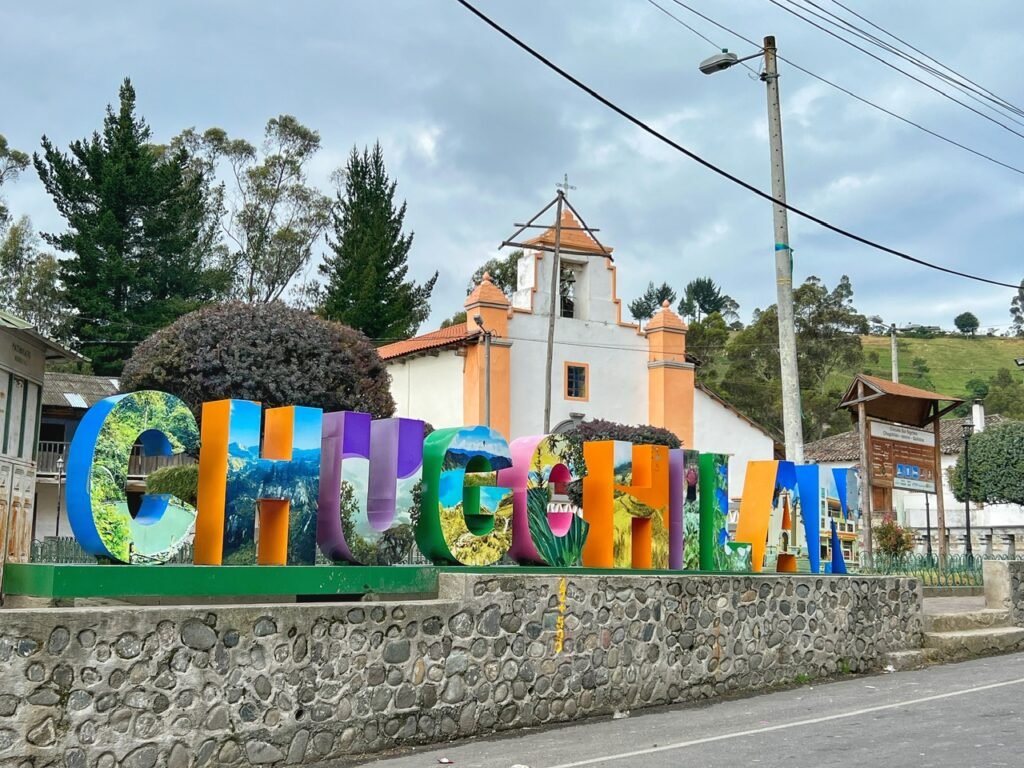
Starting out the morning in the village of Chugchilan. It may be tiny, but it was still notable enough to have a colorful and cheesy sign. Everywhere you go, it’s amazing how much Latin American tourist boards seem to have invested in these signs. We’re actually getting a bit annoyed by them. 🤣
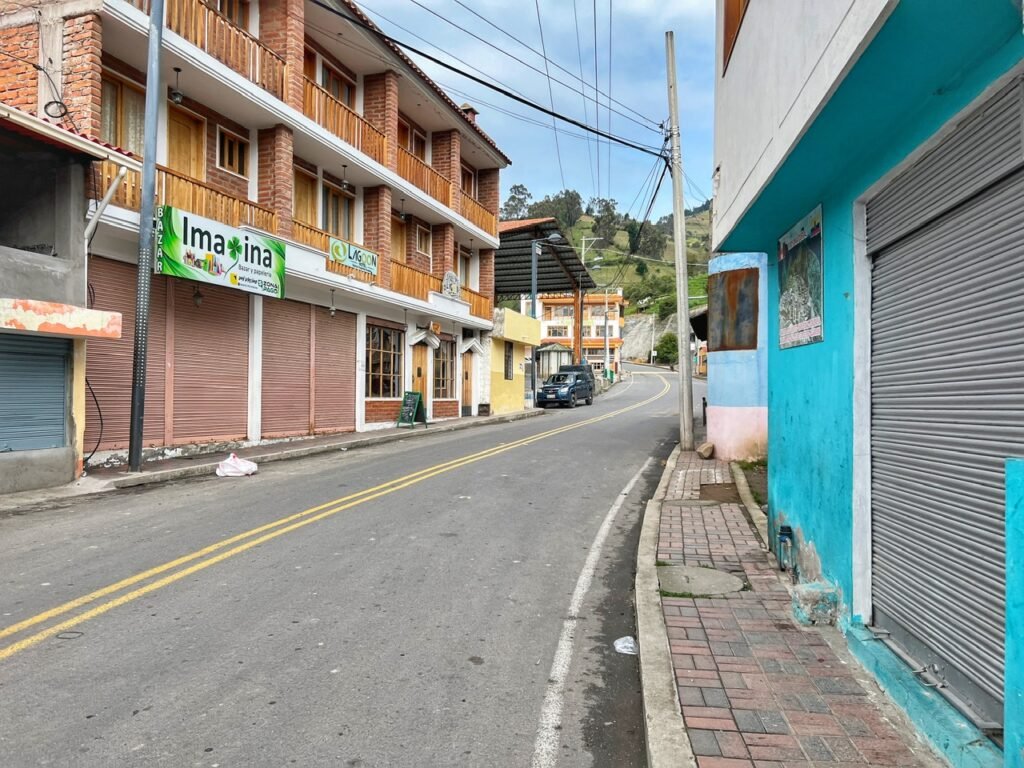
The quiet streets of Chugchilan. You can technically get here by local bus, but that would take awhile!
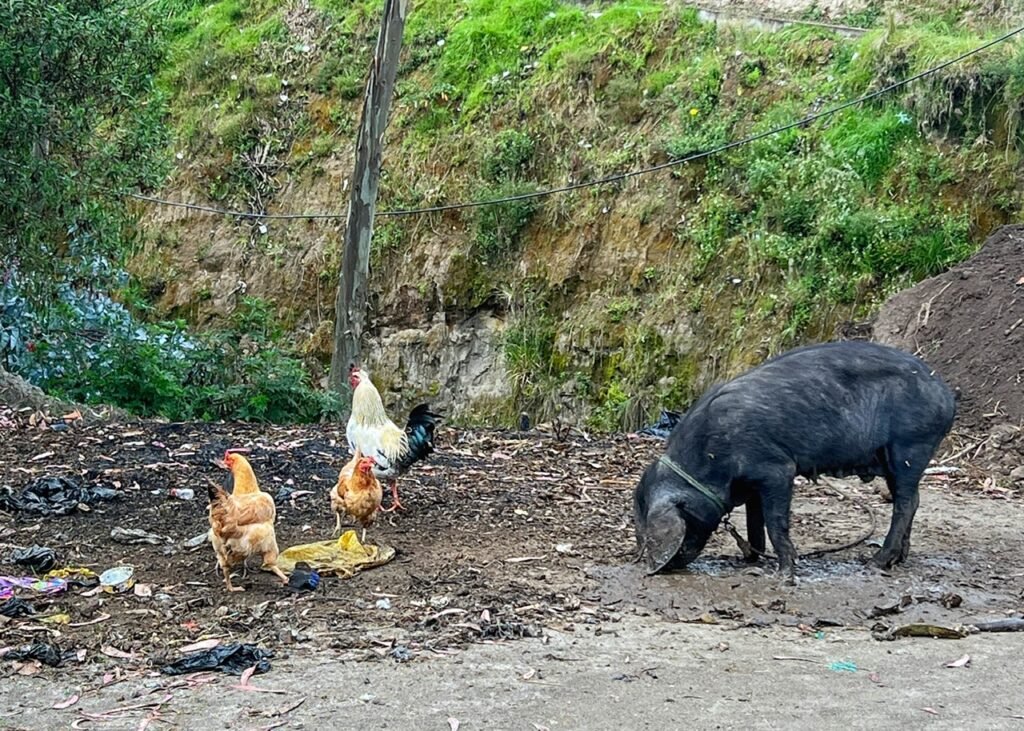
Our first “wildlife” of the morning.
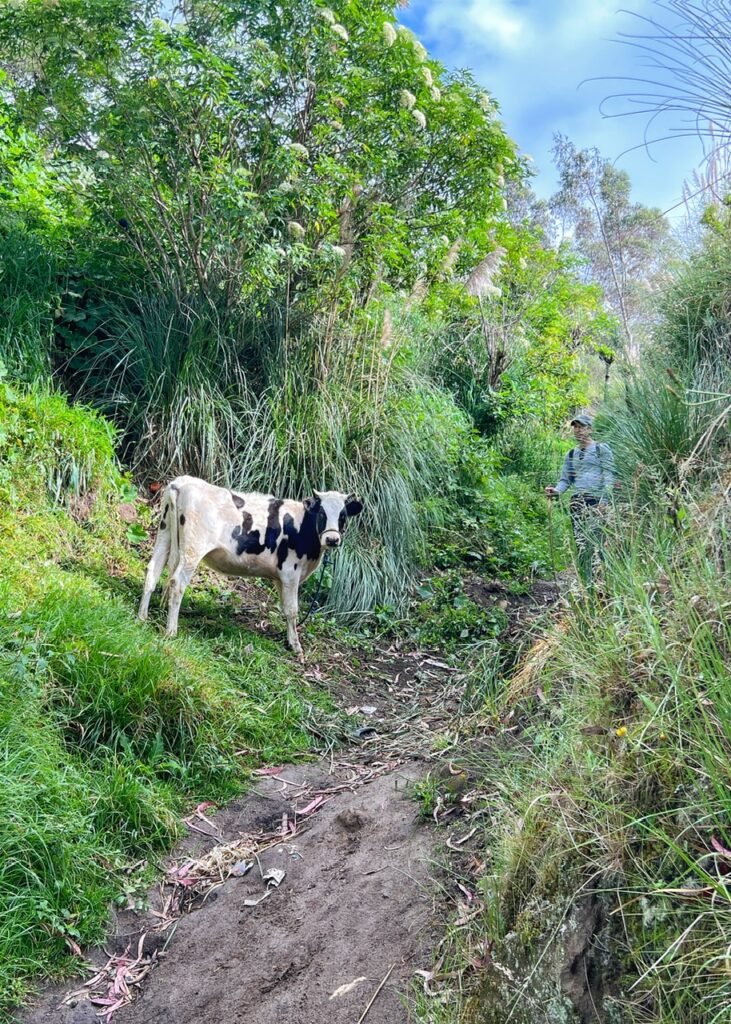
And then we immediately encountered a cow that refused to mooo-ve in the middle of the trail. (Sorry, not sorry.)
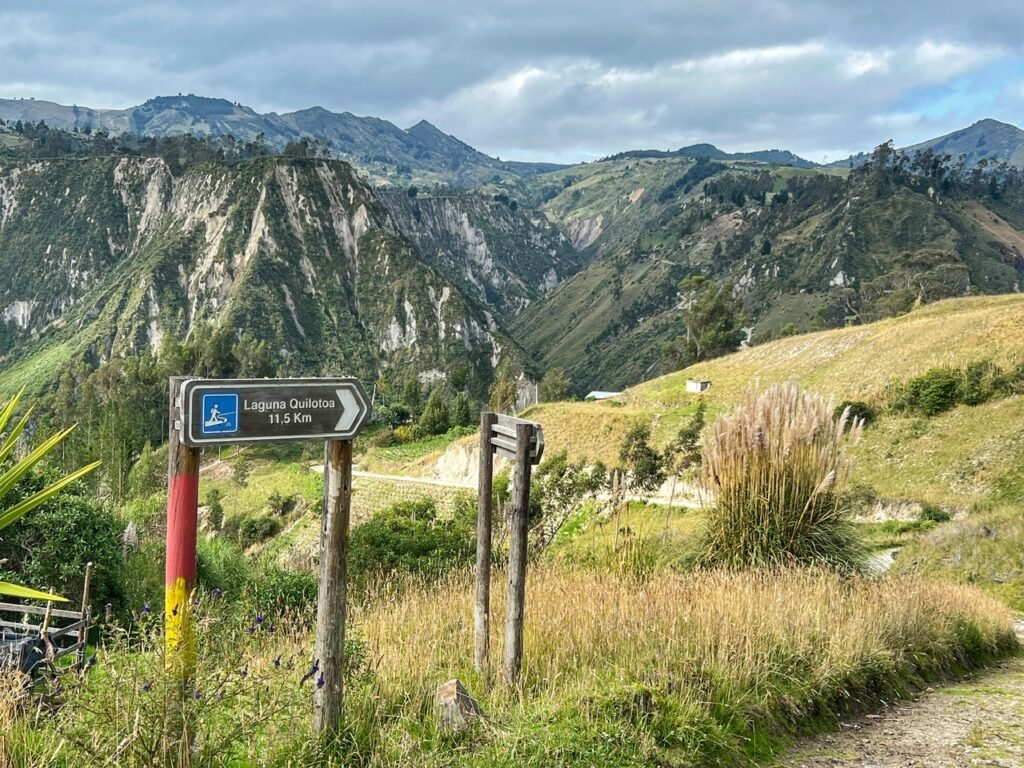
Let’s do it! 11.5k until the final she-bang.

As per normal on this trail, we again had to walk all the way down to the river just to head back up again.
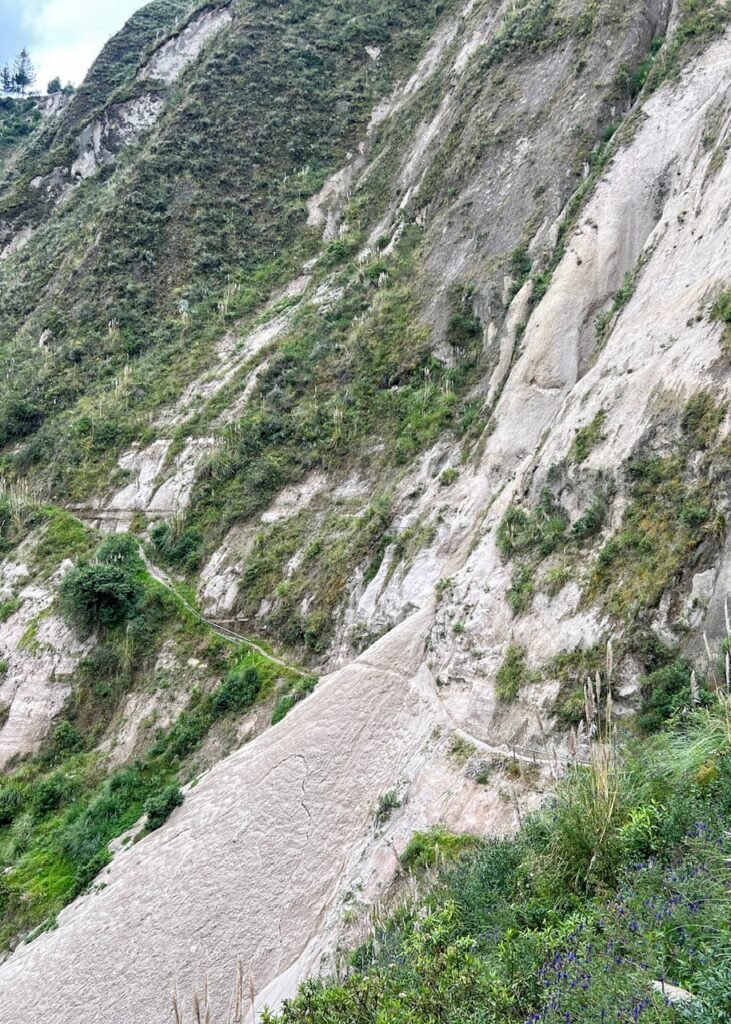
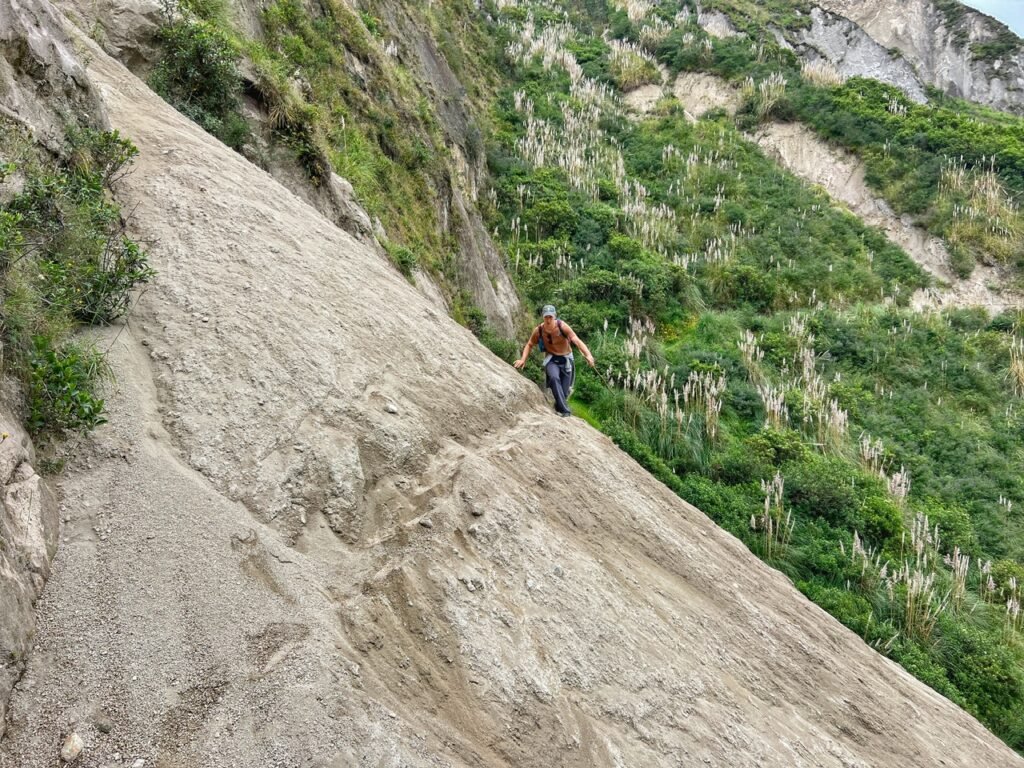
And then we came upon a precarious-looking landslide that didn’t look too trodden. Leaning into a pile of unpredictable dirt, and using our sticks to balance us inward, this part was definitely a bit edgy and gave us flashbacks of Peru.
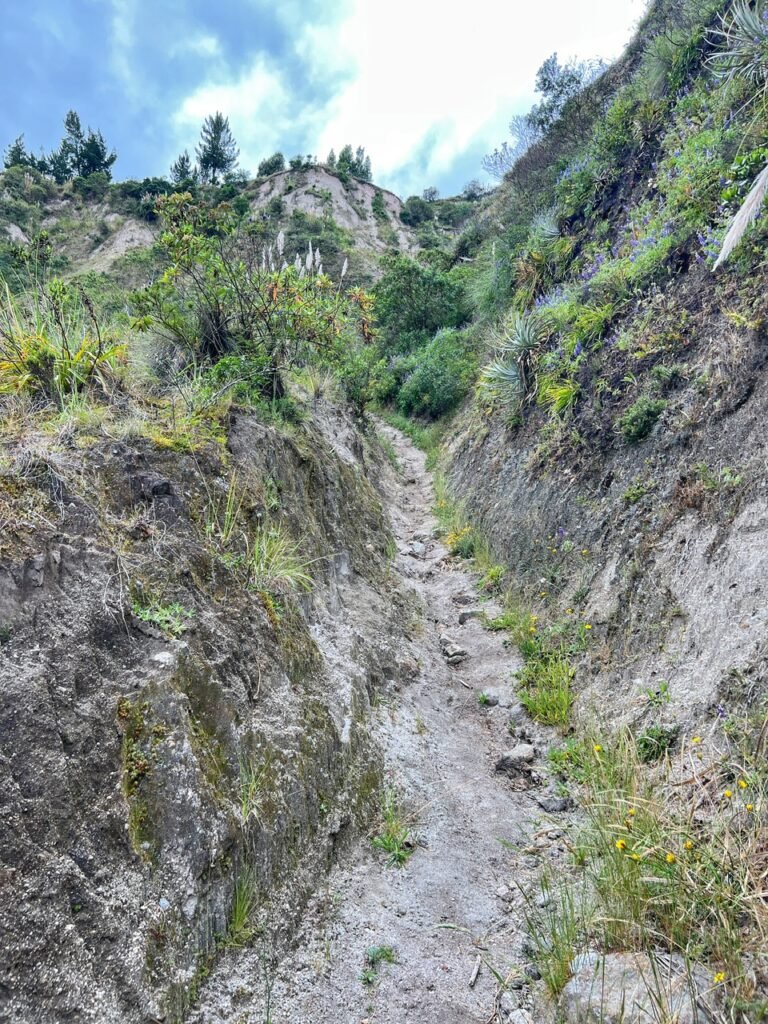
But alas, we survived and from that point forward it would be all uphill.
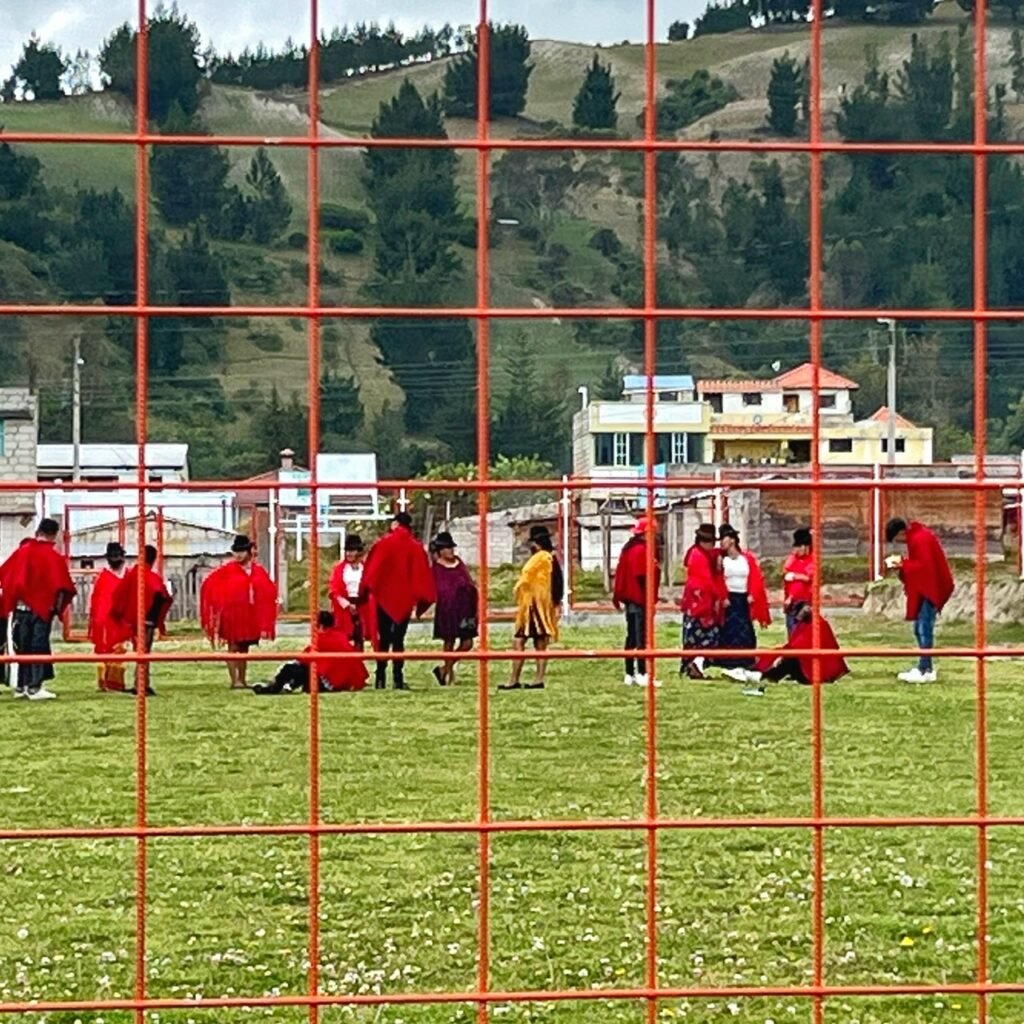
In the village of Guayama San Pedro, we got to watch a group of high schooler practicing dancing in traditional clothing. This is what they wear to school everyday and will likely wear the rest of their days. How different their lives must be.
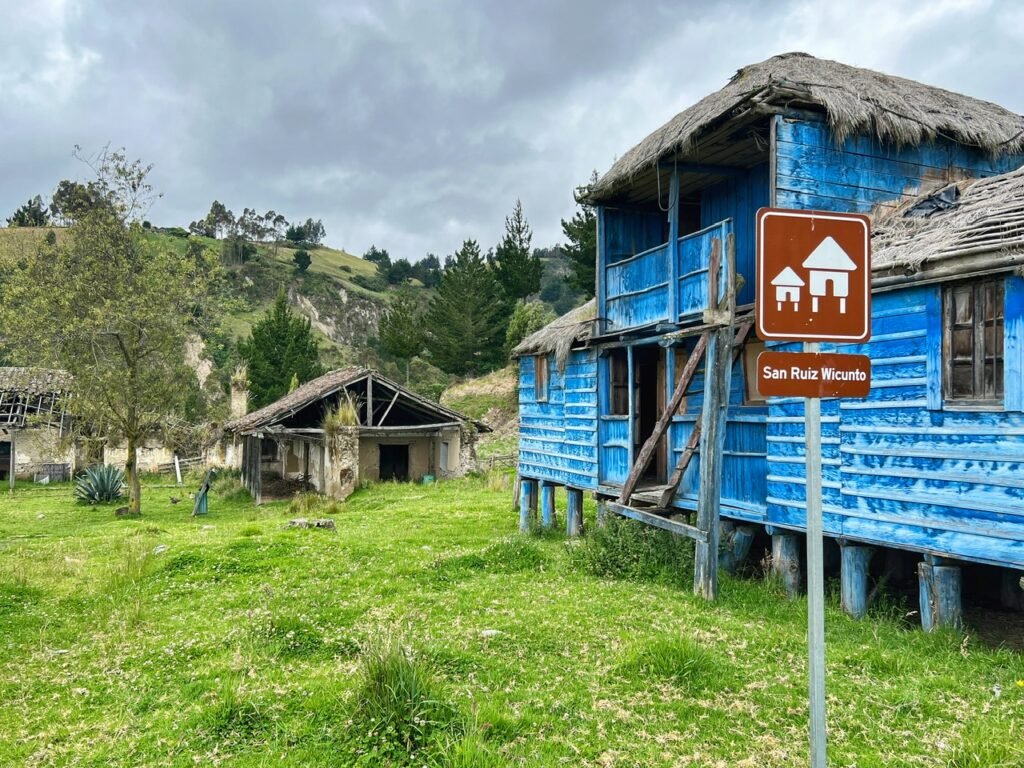
What appeared to be an abandoned village outside of Guayama San Pedro.
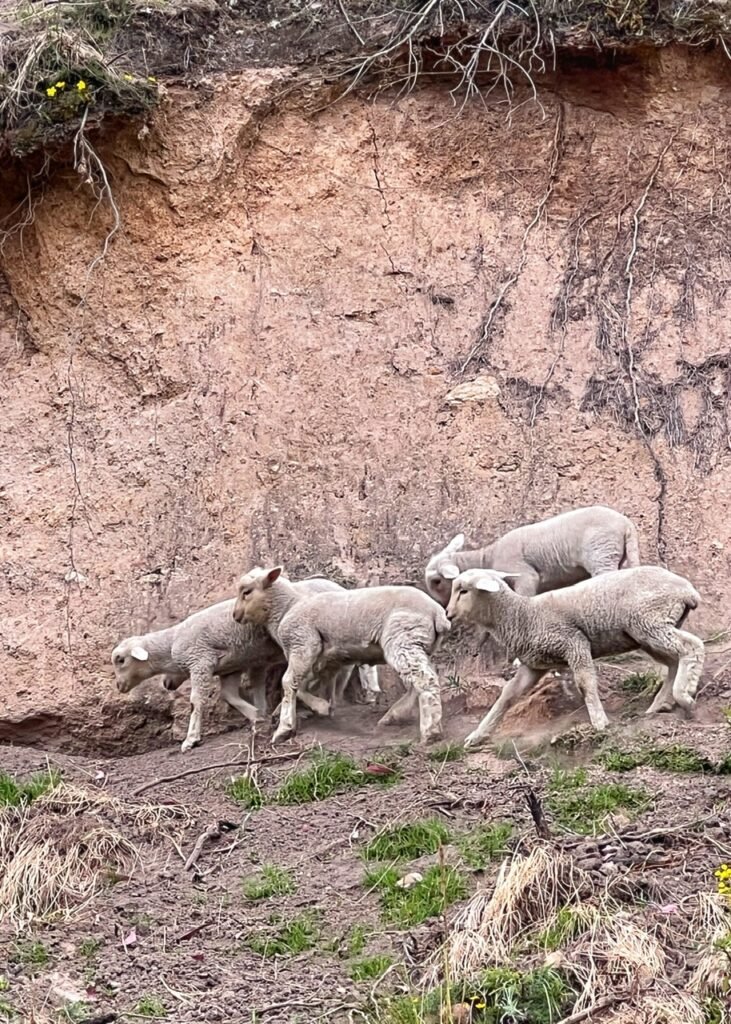
Little lambs scurry along the cliffs while their mothers far below gnaw mindfully on sprigs of delicious grass.
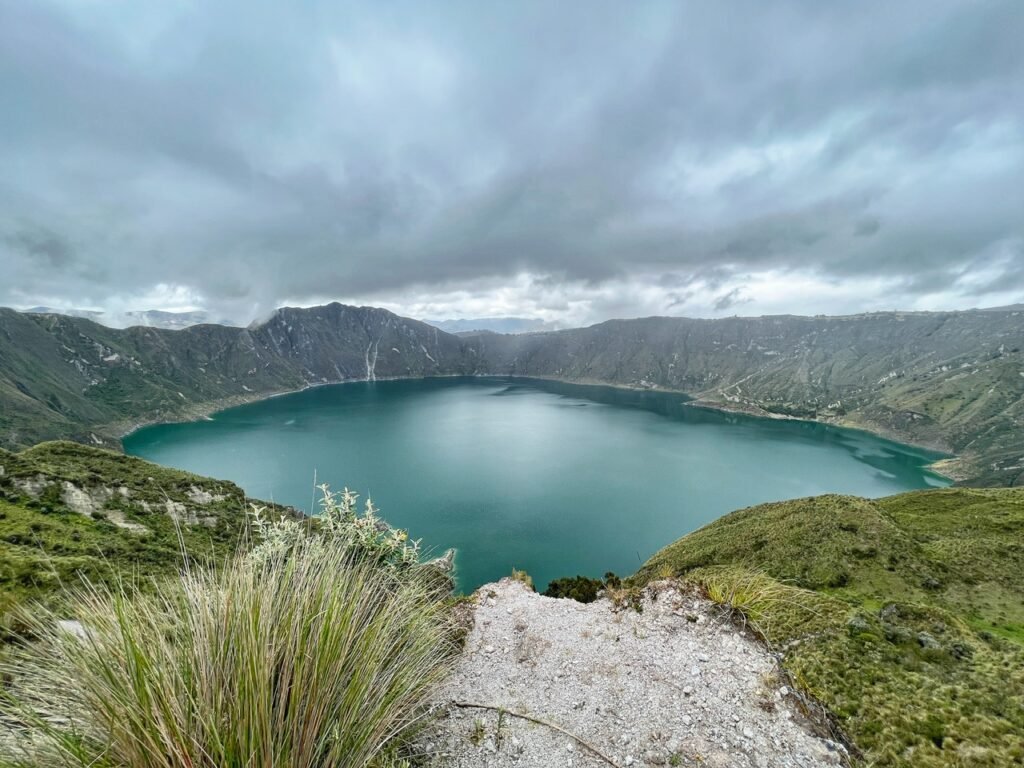
From this point there was a very long and grueling ascent up to the lake….

…which is where we decided to camp out and eat our $2 bagged lunch from our previous hostal. We also shared with a sweet new friend.
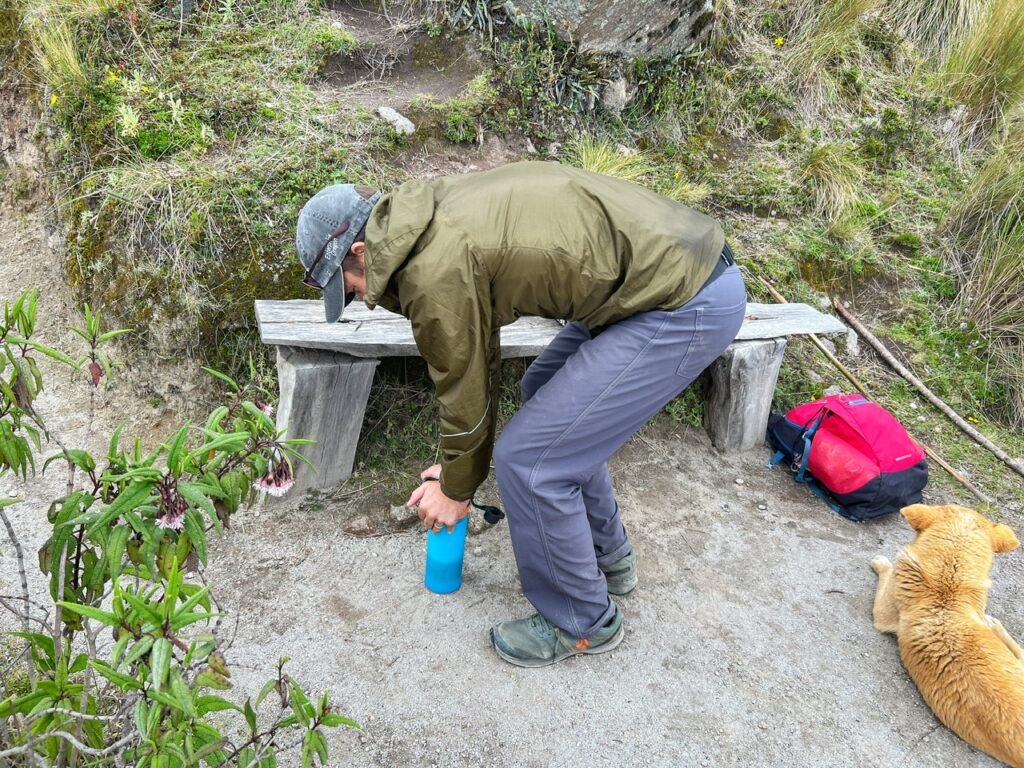
Greg purifying water with our Grayl bottle.


We did it! Almost! And when the sun peaked out for a few moments, she got even more beautiful!
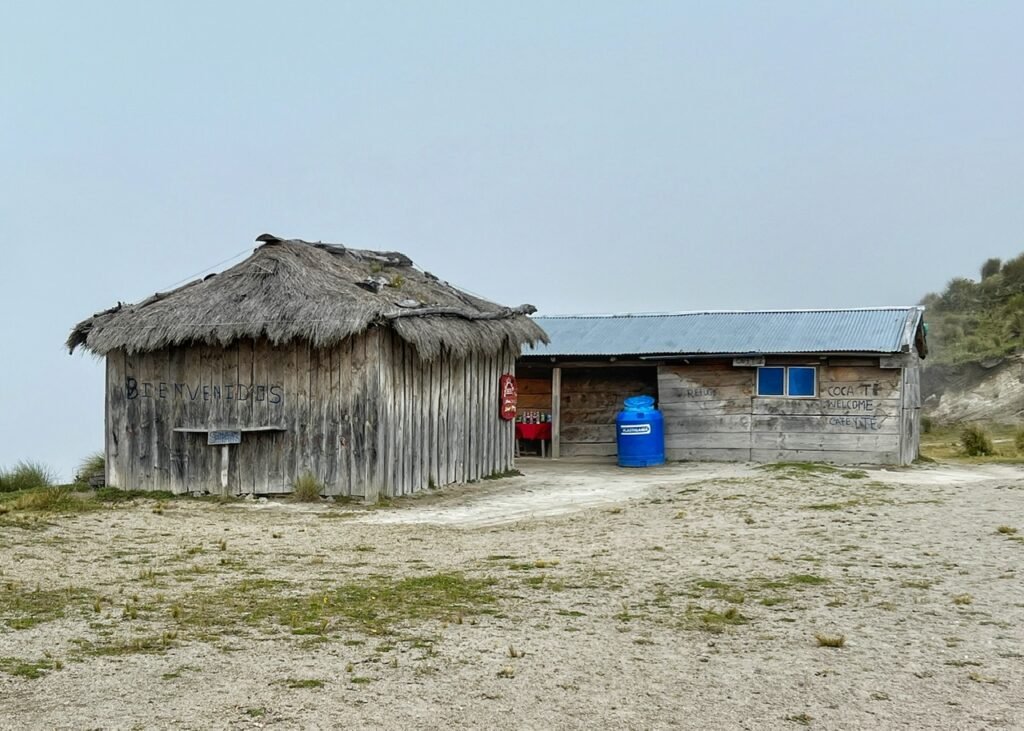
After lunch, we decided to have a drink in this shack nearby because the kind man who was running it seemed like he was really hurting for business. He must have been because he charged us $1.50 for a cuppa coca tea, which is kinda absurd around here.
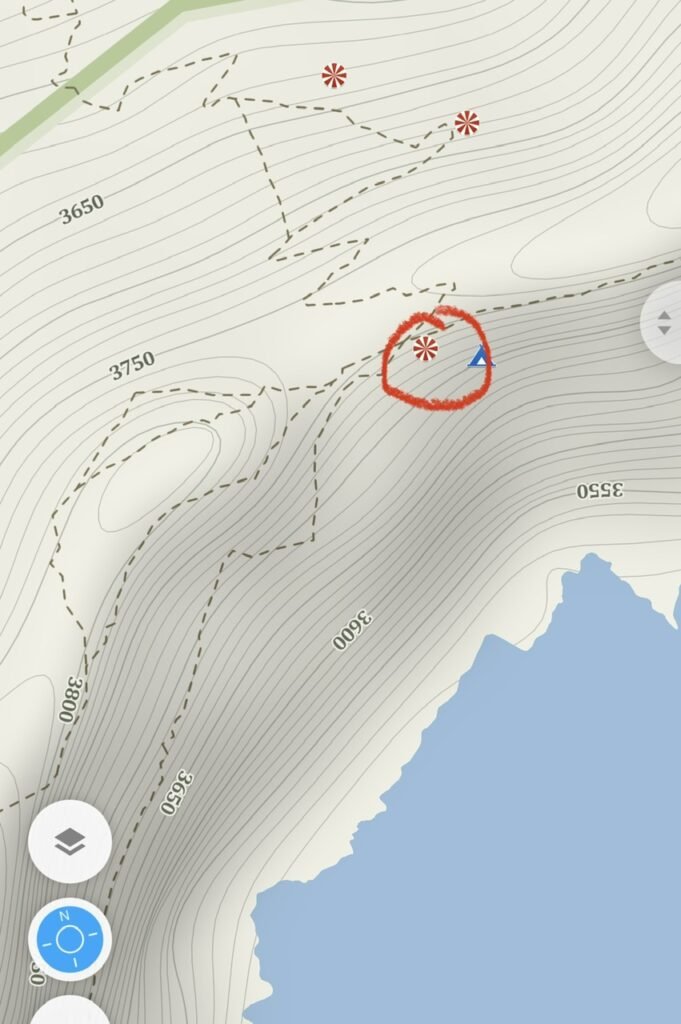
At this point, we had multiple choices for how to traverse the third of the way around the lake to the town of Quilotoa. From the circled mirador where we had lunch, you could basically take the upper or lower trail. We chose the lower as there were no signs indicating that either trail was the correct one (or not.)
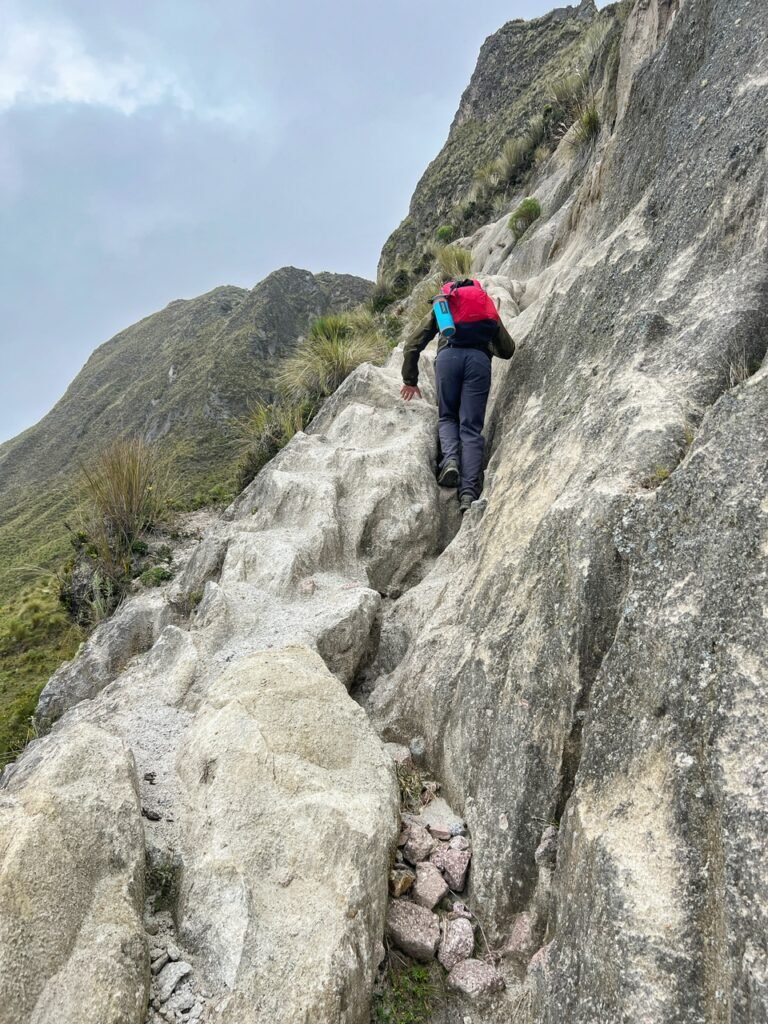
This was a detour that Greg tried to take which was definitely NOT a trail.

But wow, the views were beautiful, despite the swirling clouds and mist.
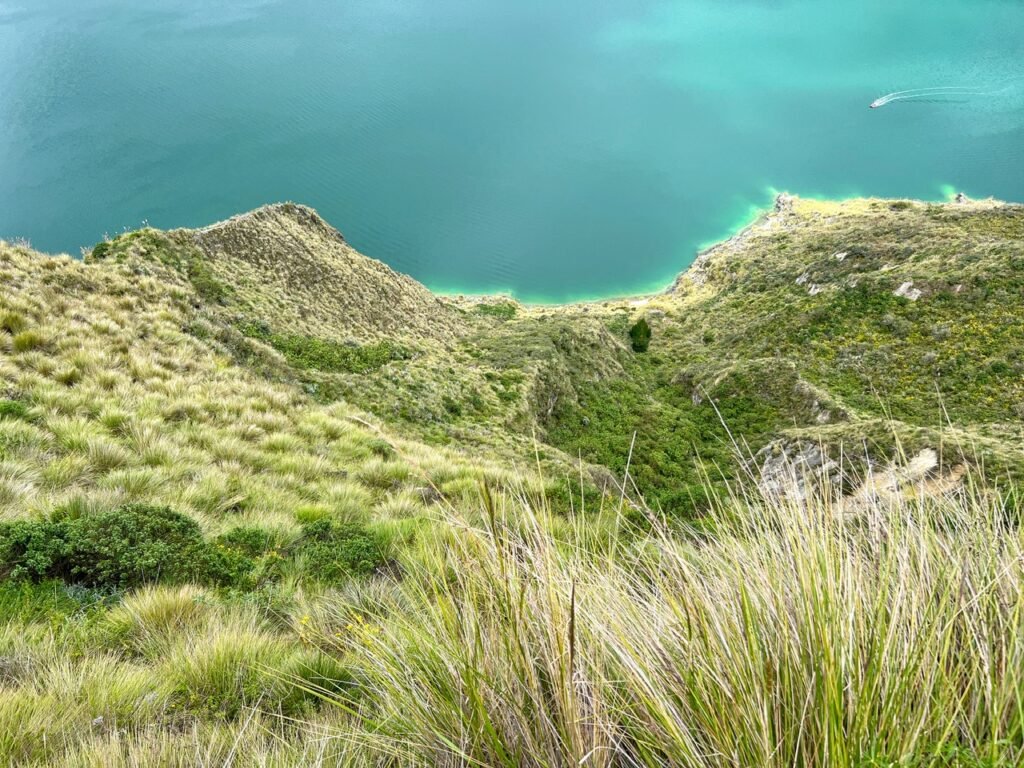
It was around here we ran into a local, who seemed friendly enough, but probably spoke Quechua natively. In broken Spanish, he told us the path we were on was “solo por animales” and we needed to go “arribe, arribe…up….up.” We tried to tell him this really didn’t make sense as we saw other hikers on the trail ahead of us, but rather than arguing we reluctantly followed him, which was a big mistake. He took us on an ass-kicking and maniacal trail twenty minutes up the crater, eventually spitting us out on the upper trail. Of course, as we’re panting from the ass-kicker, he then demanded money for guiding us out of the crater. When we gave him $3, he got very angry demanding more, which we didn’t give him and told him he had been dishonest. We eventually turned and walked very quickly away and fortunately he didn’t follow. It was very sketchy and sadly put a bit of a damper on the end of our hike. When we arrived to Quilotoa, we immediately approached a police officer and attempted to tell them what had happened. Unfortunately the town of Quilotoa is crawling with scammers, which is sad because the rest of Ecuador has been very unlike this.
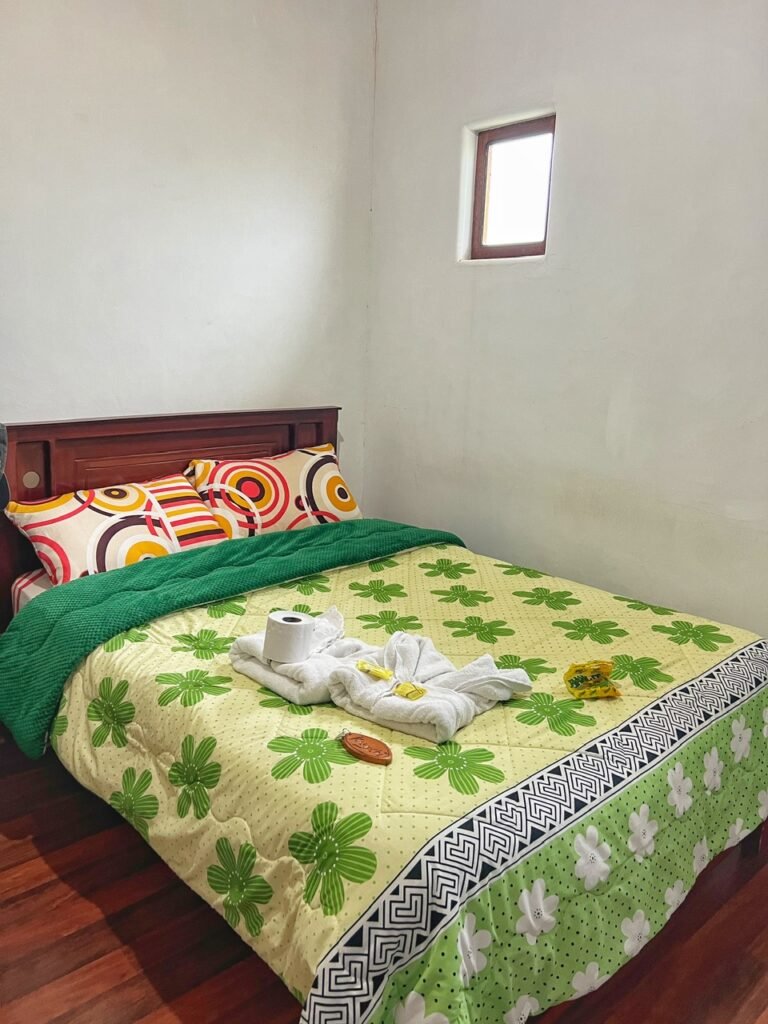
We were very grateful to arrive to Martita’s House Hostal where we were greeted by an eight-year-old “manager” and his ten-year-old sister. We had to wait about an hour for an actual adult to show up. In the meantime, we watched a Veggie Tales-like cartoon with babbling fruits and vegetables. Always the best listening exercises in Spanish 🤣 Our room, which had a ship-like window, was $40 for the night and included a hot shower, dinner and breakfast.
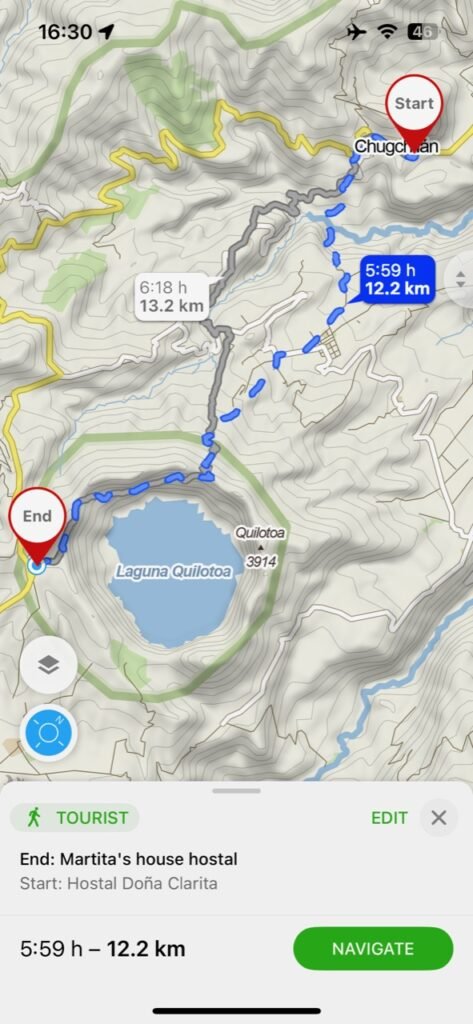
Day 3. Whew!
Before and After the Trek: Latacunga

We landed in Latacunga for two nights, both at the beginning and end of our multi-day hike. The town itself is not the most picturesque city in Ecuador but it certainly offers a little bit of charm, plenty of services, terrific bus connections, and when she shows herself, a phenomenal view of the actively puffing Cotopaxi, one of the most textbook stratovolcanoes in the Ecuadorian Andes.
This photo of Cotopaxi was taken on Calle de Oriente heading uphill east out of the center. This volcano is simply striking for its perfect cone shape, snow-capped rim and current billows of smoke emitting from the top. Cotopaxi is among the highest active volcanoes in the world. It is known to have erupted 87 times, and this current one began in October. The last violent eruption was in 1877 and it destroyed the town of Latacunga twice in the 18th Century. Ring of Fire indeed.
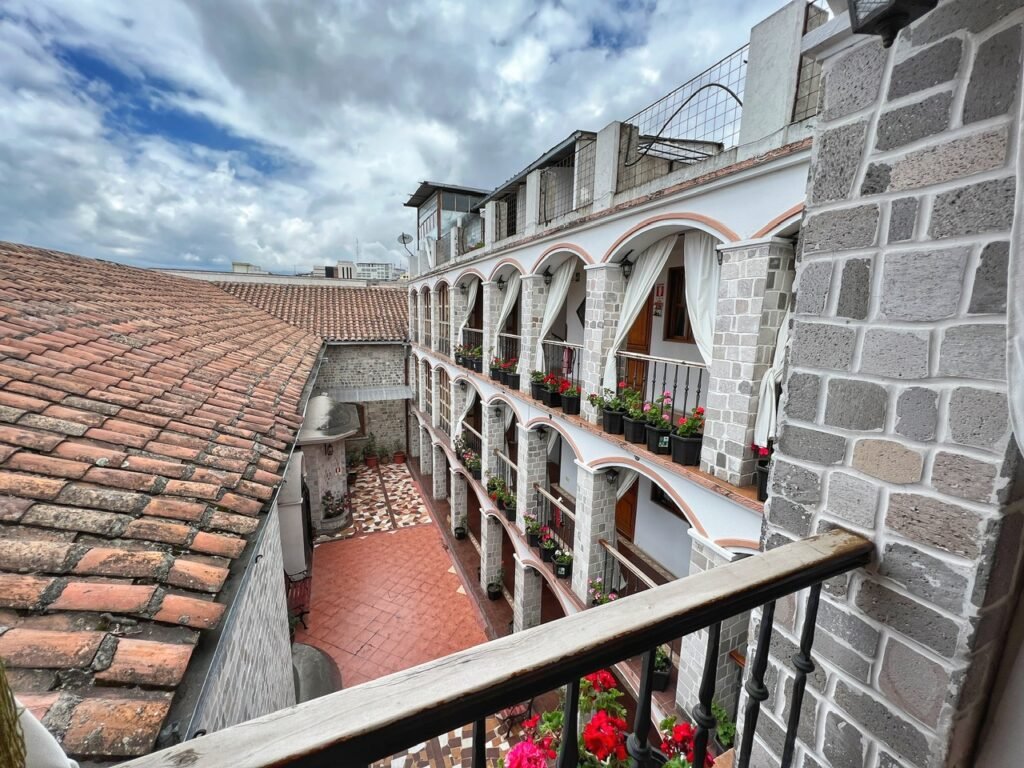
We stayed at Villa de Tacvnga for our return visit to Latacunga which was a beautiful and quiet boutique hotel listed at $55 on Booking. However, we got it for $1.20 thanks to booking credits on Hopper. Have you started using Hopper yet? If you want $25 off your first booking, here’s our code: https://sharing.hopper.com/invite/gregc3c2
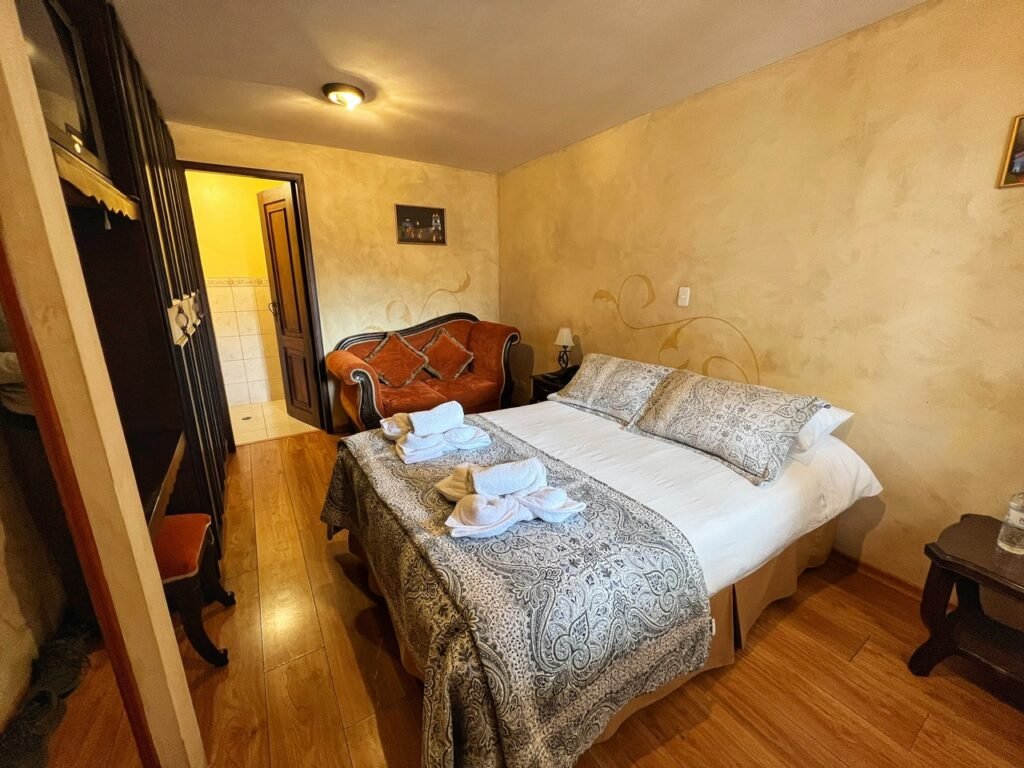
The hotel included a wonderful breakfast, and probably the best night of sleep we’ve had in awhile. Perfect pillows, perfect mattress and quiet (no ear plugs!) What we call a trifecta.
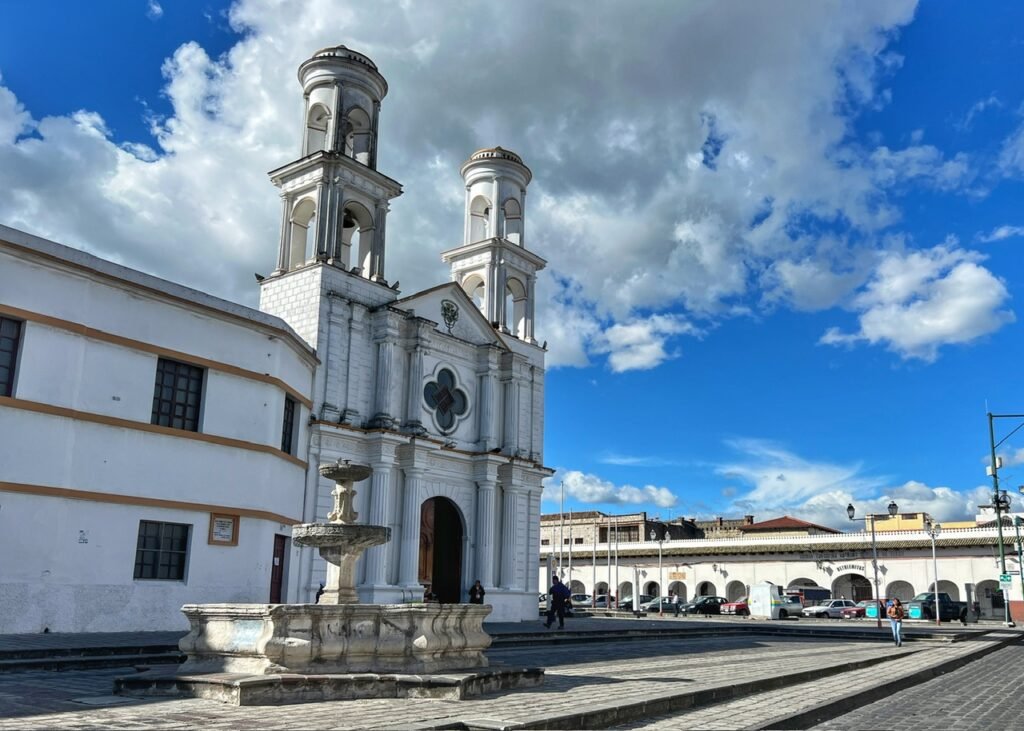
Iglesia Católica La Merced against the idyllic blue sky!
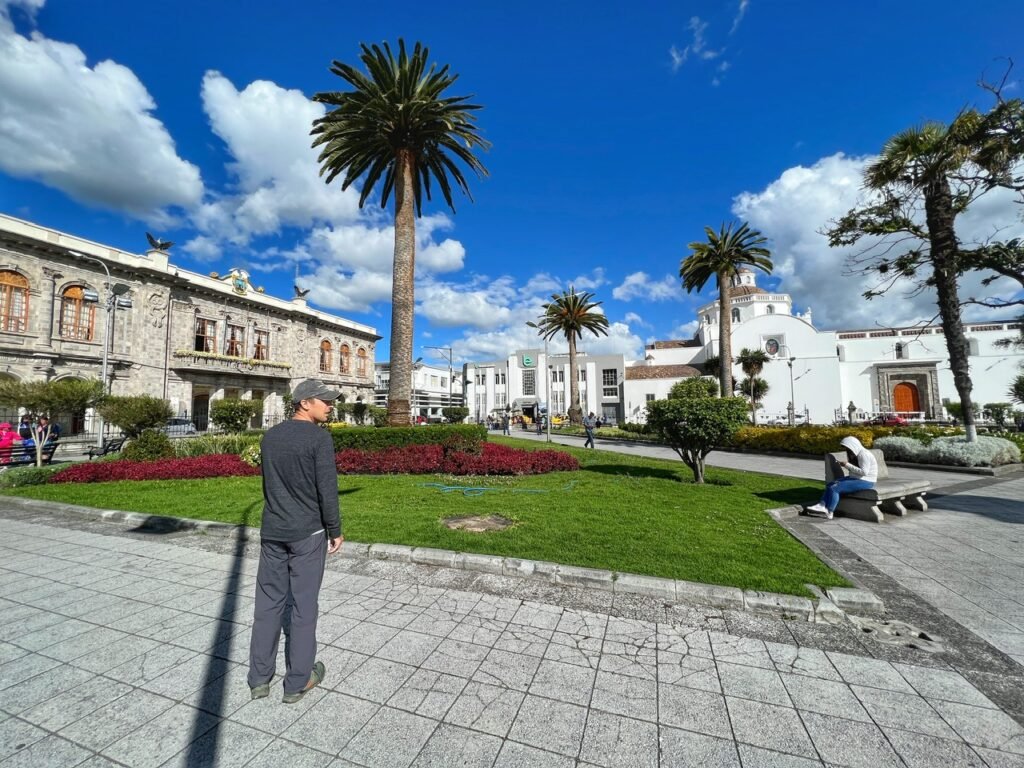
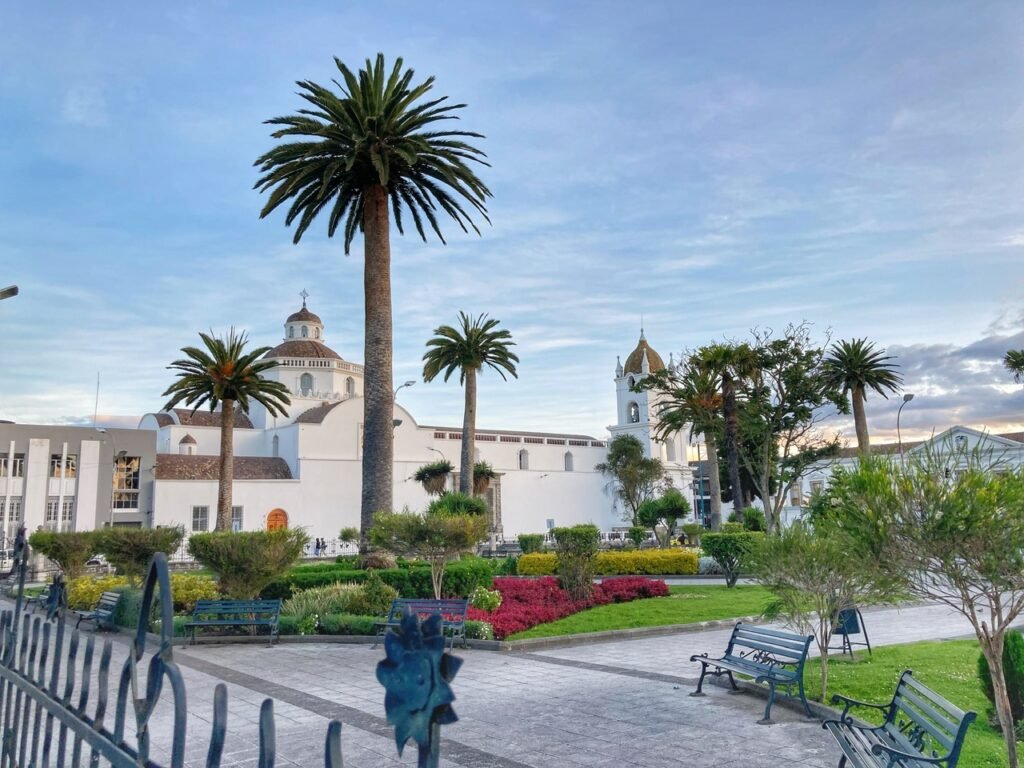
The main square of Latacunga offers some architectural appeal, but nothing to write home about.
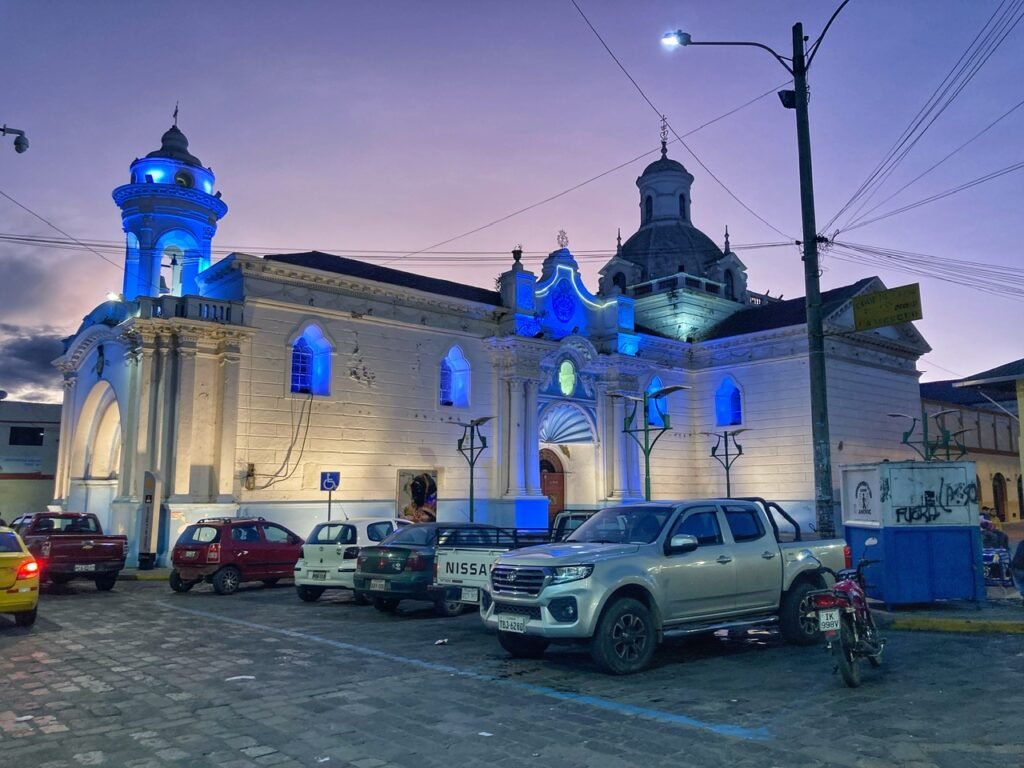
They used a lot of blue light to add accents at night.
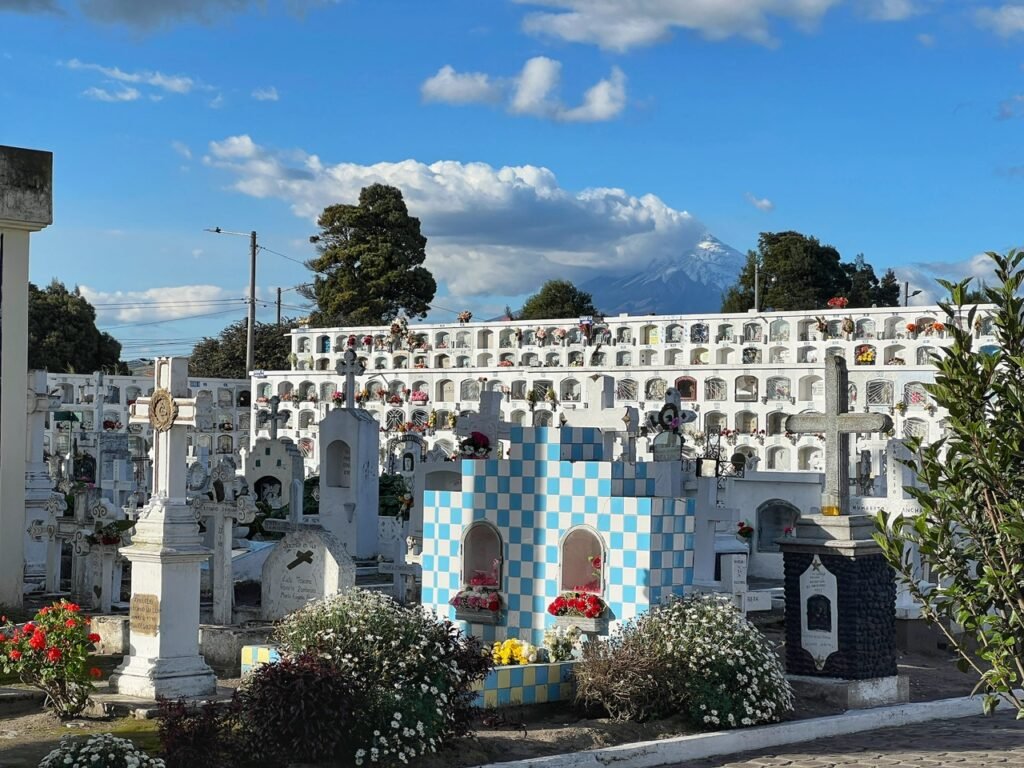
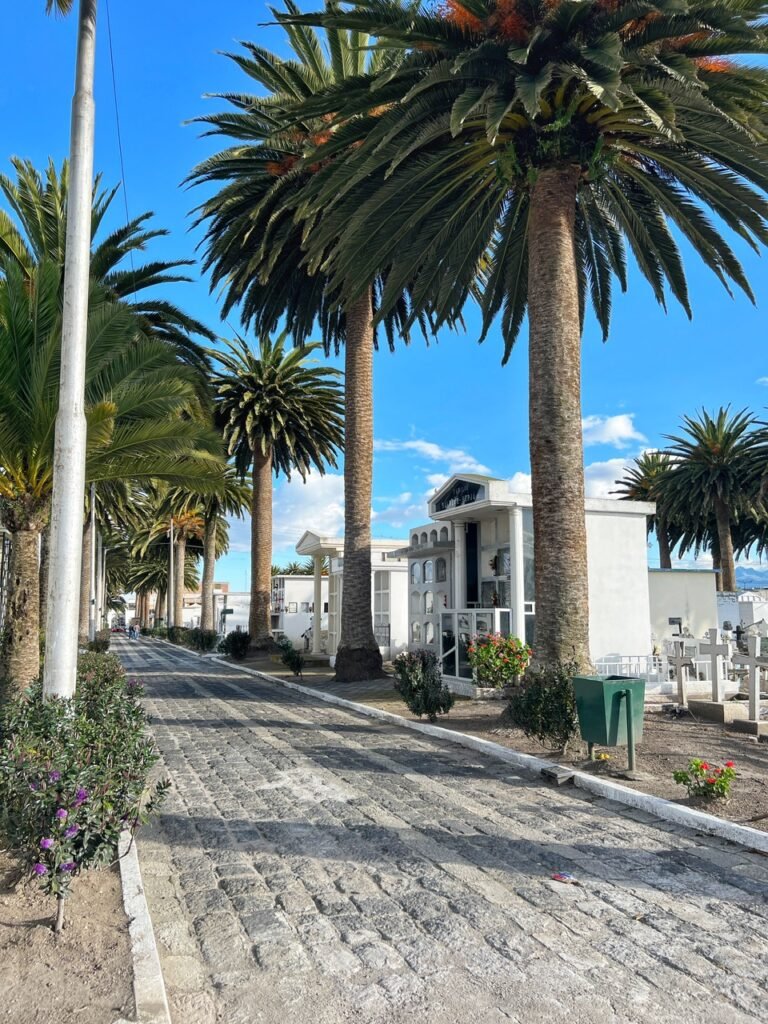
In the General Cemetery of Latacunga, bedecked with an avenue of pluming palms, all the bodies have been entombed above ground. You can see Cotopaxi looming in the background.
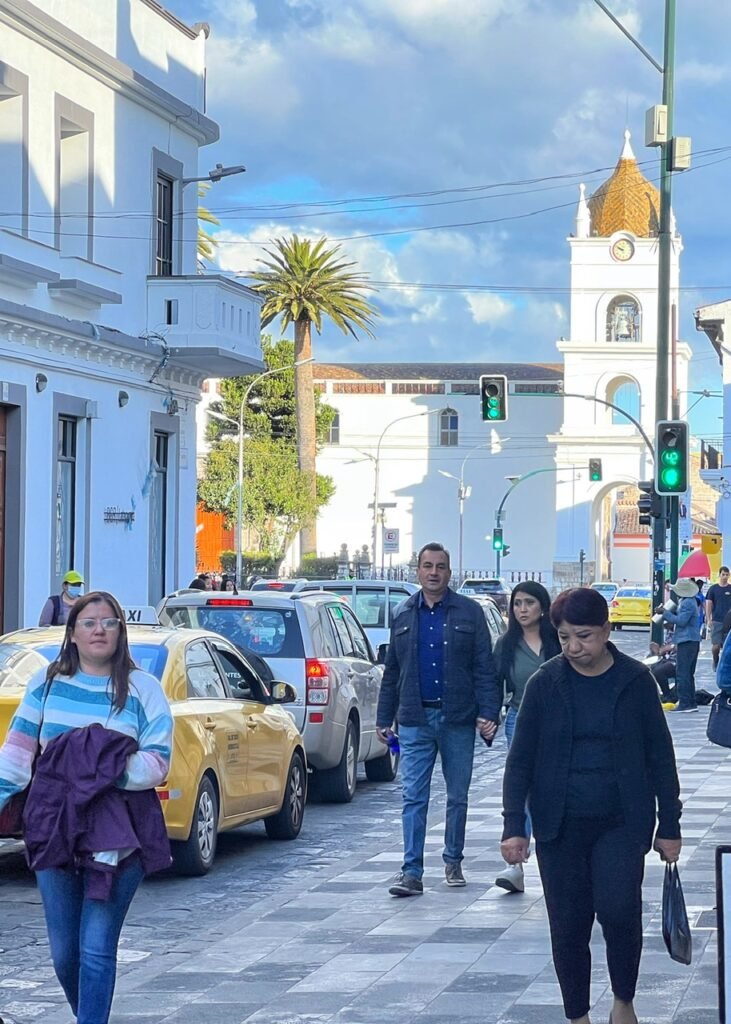
Street scene Latacunga
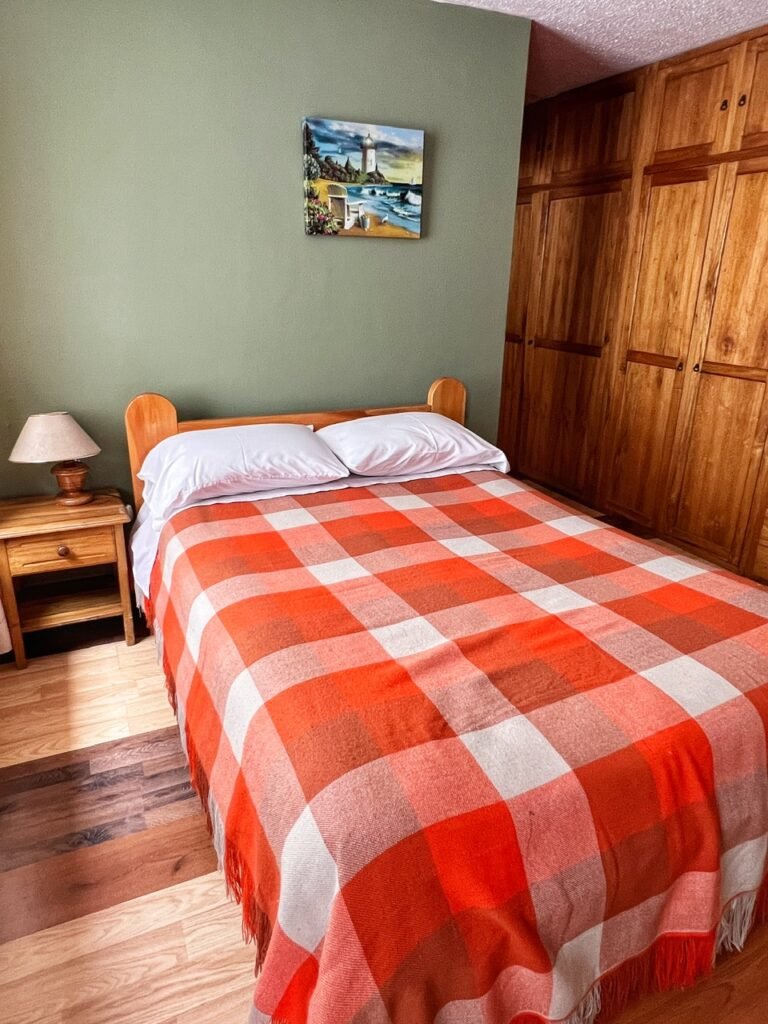
Our first room at Hotel Rosim the first night was $25 including breakfast. They held our backpacks for us for free while we went gallivanting in the mountains.
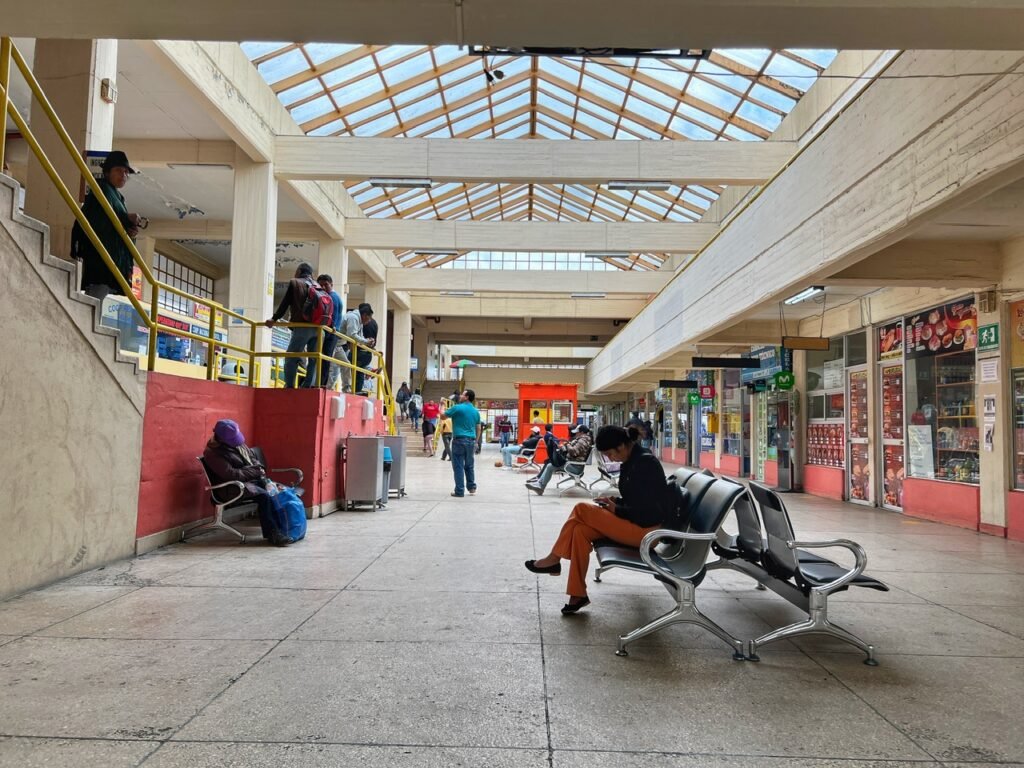
The bus station at Latacunga was centrally and well connected. Getting to the start of our hike in Sigchos was a breeze, albeit a bit nauseating with the winding roads.
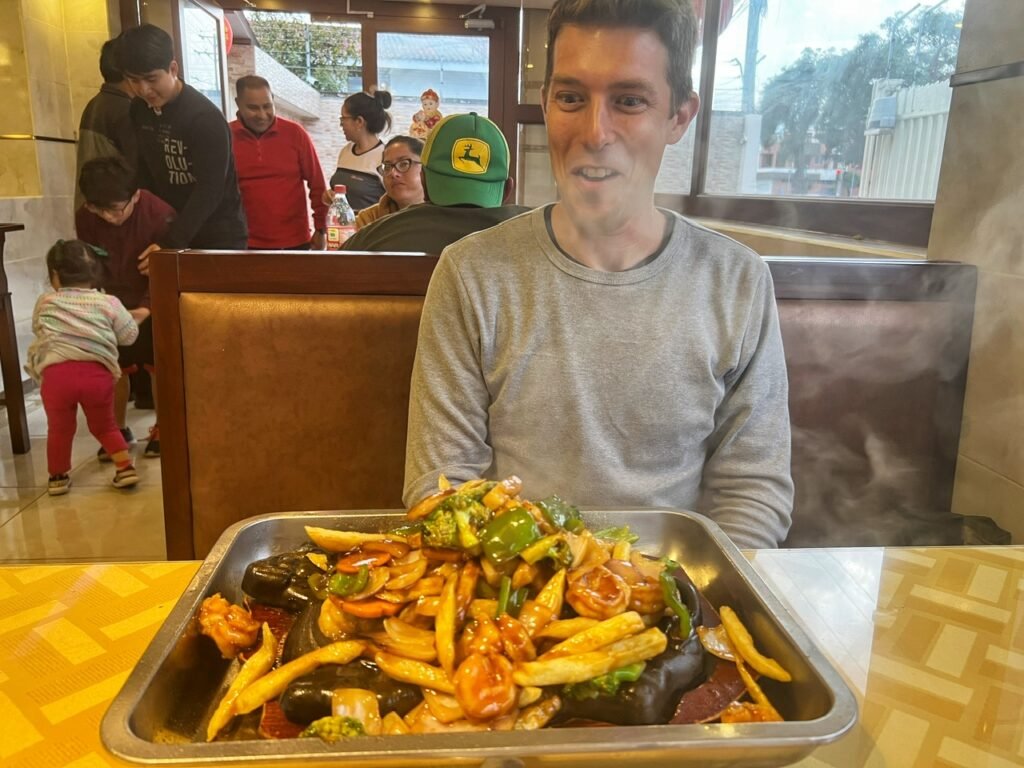
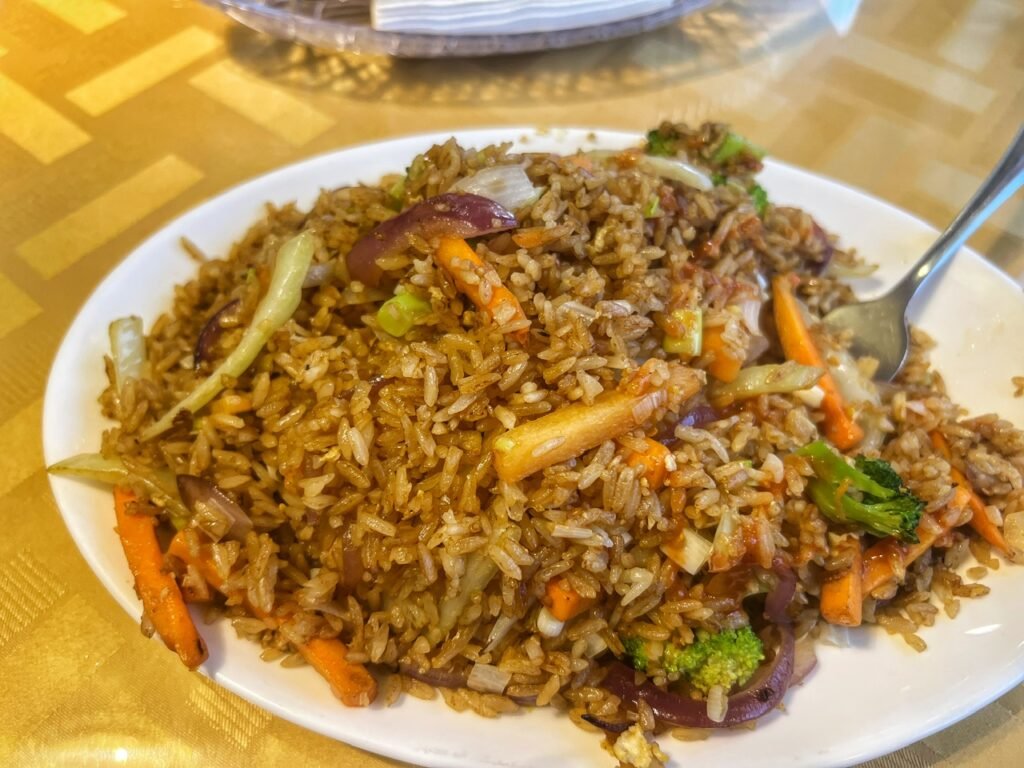
When we returned, Greg wanted to celebrate our 3-day calorie burn with a big meal so we opted for a Chifa Kung Fu Panda, whose 4.9 star reviews mentioned they had big portions. Needless to say, we weren’t expecting the Camarón a la Plancha portion to be the size of a buffet serving tray or for dinner to turn into an eating challenge fit for a US reality TV show. Also, Greg insisted he wanted his own plate so Mandy ordered her own, which she thought would be a nice small plate of vegetable fried rice. This was highly inaccurate. Needless to say, we ended up with enough food for two more meals for the cost of $13.



